Reading time 12 minutes.
Mumbai, formerly known as Bombay, is the capital of the Maharashtra state. It is the most prominent center for finance, commerce, and entertainment in India. The city has been built over seven islands and the areas between them, which were reclaimed from the sea.
The City of Dreams
I heard many times that Indians come to Mumbai to make their dreams come true. Even for a traveler, there is no denying Mumbai stands out from the rest of the country. Compared to other cities, short term accommodations are significantly more expensive, there are a lot more fancy options for food and drinks. You can feel the former British rule in the historic center. Many beautiful buildings, designed in Gothic Revival and Indo-Saracenic architectural styles, are from that period. Mumbai also has the most impressive skyline in India, it is where we saw by far the most skyscraper. And cats were better fed!
Sharan the Surfer
Sharan is a Couch Surfer ambassador with over 250 reviews on the platform. I think he meets Couch Surfers at least weekly, although he does not necessarily host them. It is hard to figure out how he finds the time and energy to show people around, help them navigate the city, provide recommendations and party with them. He likes to give very precise itineraries. We were fortunate to meet him several times during that week in Mumbai. He took care of a couple more Couch Surfers during that week! He knows the city inside out. And it is a lot of fun to hang out with him.
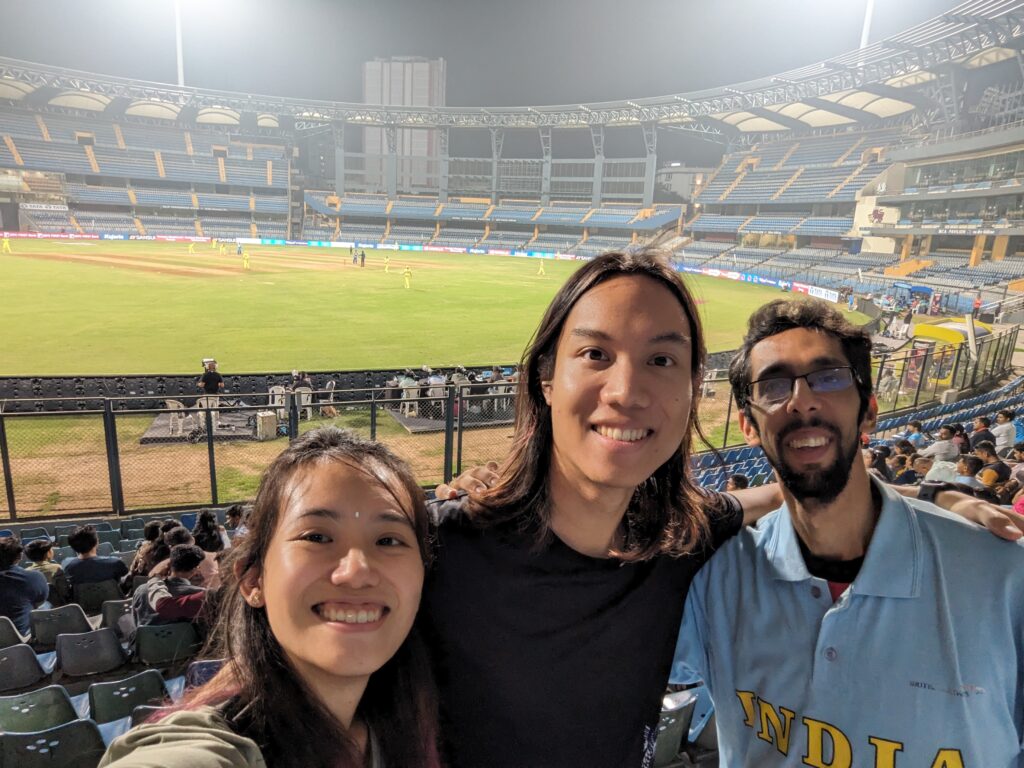
Transportation
Tuktuks are not allowed in South Mumbai. However, you can take taxis (no AC most of the time), Ubers (AC). Bus are working fine as well. In the suburbs, like in Bandra, tuktuks are allowed.
There was no metro yet in Mumbai. The train network is good, we used it daily. We were told it would be too crowded for us. Somehow, we managed to avoid the peak hours. Many blind people and transgender women were begging on the trains. Blind people were usually travelling by pairs. Transgenders received more significantly more donations. They were dressed in colorful traditional clothes, gave blessings, and touched people, often on the head, sometimes without solicitations.
On non AC trains, there are 3 types of compartments: first class, second class for women and mixed second class. Inside a car, a grid usually separates the first and the second class.
In Bandra, we saw at one crossing point at least 10 policemen handling the traffic. It did not prevent some car drivers, tuktuks and pedestrians to misbehave right in front of them. I wonder why they did not impose any fines.
Scooters and motorcycles are behaving like bikes in Paris or Montreal. For instance, stopping at the red light seems optional.
We took a Uber to go to the airport at 4 in the morning. The train would have been a risky bet. For the first time in seven weeks, we had a functional seat belt!
Trains and boats honking can be very powerful, mind your ears!
South Mumbai
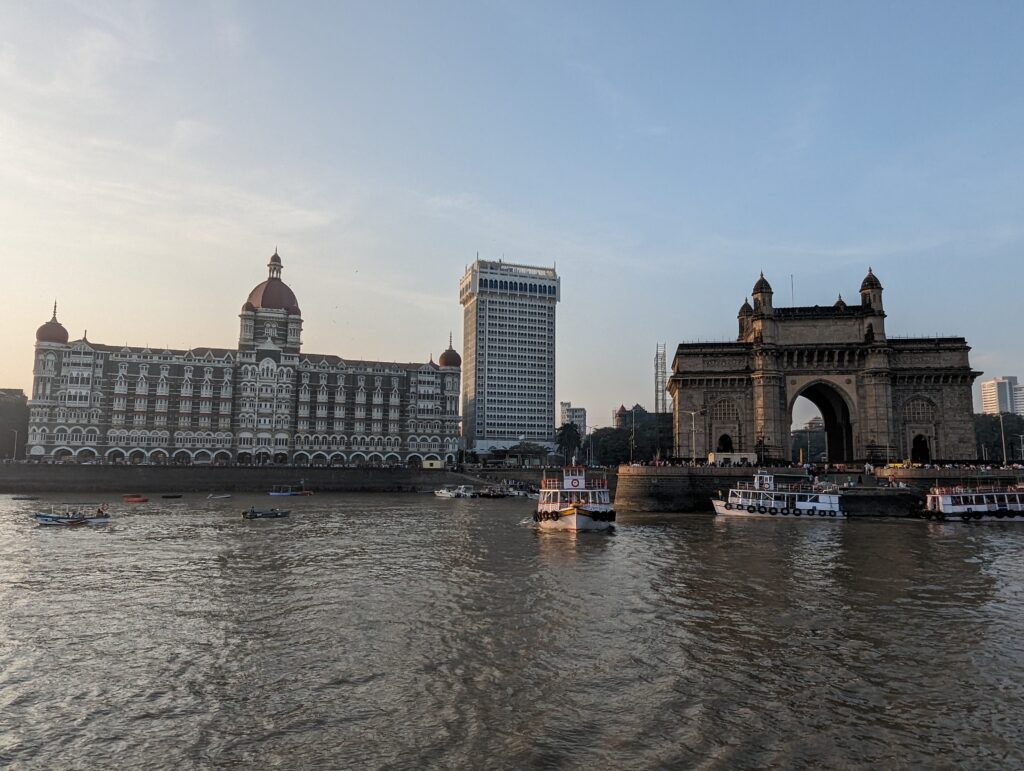
We took the second class trains from Grant Road to Church Gate. Then, we often walked from the train station towards the Gateway of India.
We visited the area twice on our own and once with Sharan and two Dutch girls.
When the girls ordered sugar cane juice, I was curious about the incense, Sharan told me it was used to keep the flies away.
We passed by the University of Mumbai and many colleges.
The David Sassoon library is beautiful on the outside. Sharan tried to get us inside, even if you need a subscription. He is actually really good at gaining access to places, but this time it did not work out.
We had lunch at the Café Léopold, a nice but overpriced English pub (I had just arrived in a more expensive city, so I might be biased). It is famous as one of the first targets of the 2008 Mumbai attacks. Traces left by bullets were still very obvious on the ground floor.
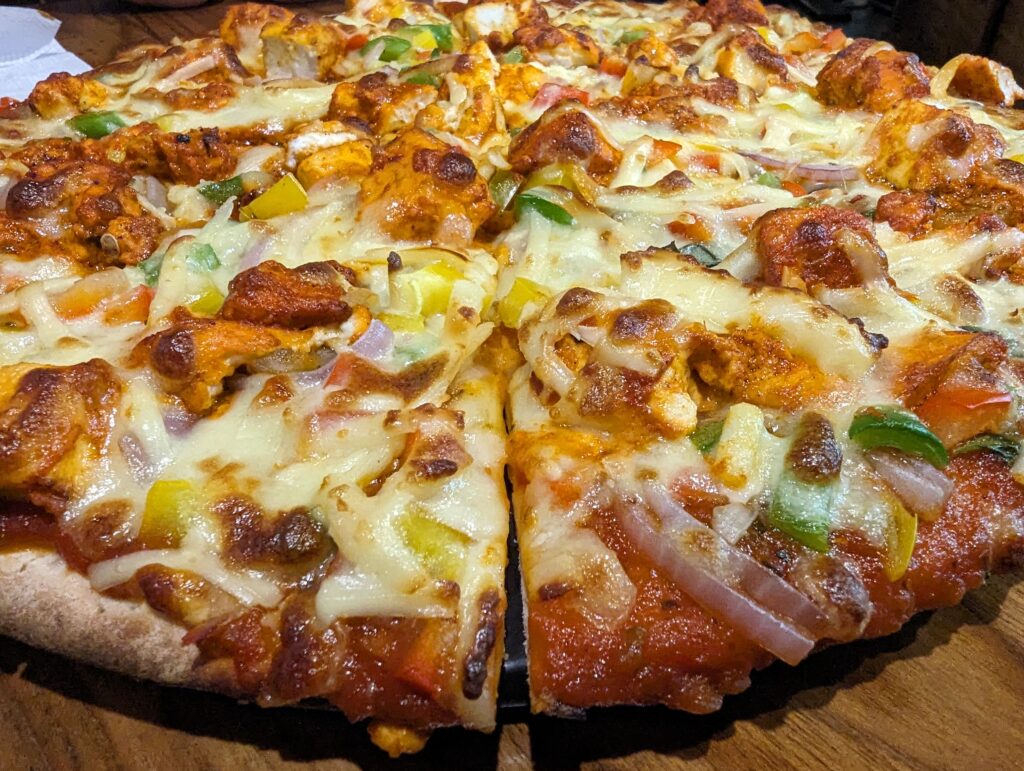
The Taj Mahal hotel is located on the waterfront, opposite the Gateway of India. It was built in 1903 by Jamsetji Tata, founder of the Tata Group. A white tower was added next to it in 1972 as an extension. As we were walking on the shopping gallery of the hotel, I saw a beautiful woman in a conspicuous dress walking down the stairs with hotel staff at her side. It crossed my mind she could be a Bollywood star! When we came back to the lobby, I saw her again at the piano. She was the pianist, and played surprisingly poorly. Such a disapointment!
In the shopping gallery, I liked the collection of portraits of the celebrities who stayed in the hotel. The Taj Mahal hotel was also one of the main target of the 2008 Mumbai attacks.
On the left, behind the Gateway of India, there are ferry boats to go to Elephant Island. It’s a one hour trip to get there. There is a small fee (20 rupees?) to step foot on the island, and another entrance fee (500 rupees for foreigners?) to visit the caves.
On the right, behind the Gateway of India, you can take a 20-minute boat trip to enjoy the view of Mumbai from the sea. It cost approximately 120 rupees, plus 20 to access the upper deck.
In front of the High Court and the University of Mumbai, there is a playground called the Oval Maiden which is used for cricket practice. It is very busy on the weekend. I joined briefly one of the groups and tried hitting a tennis ball with the cricket bat. Not easy, I hit it correctly once, nonetheless! My timing was messed up: the balls were slow, to be nice with me, I supposed, and the bat had more inertia than I thought.
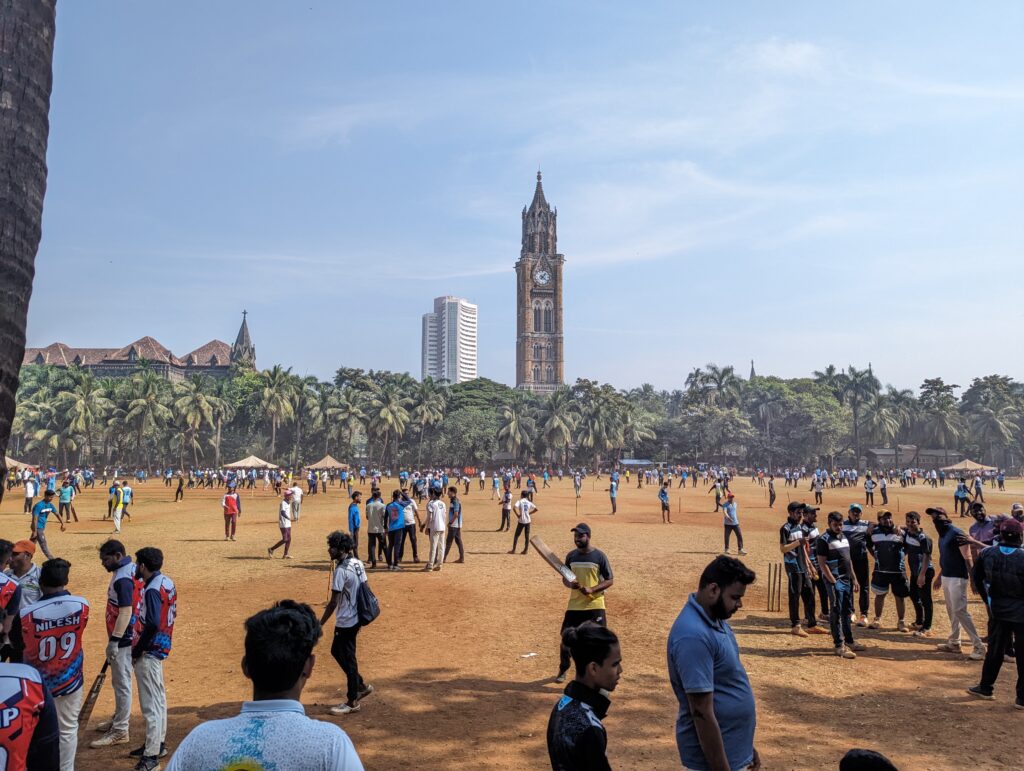
On the last day, we watched a cricket match at the Wankhede Stadium: the second match between Indian and Australians women’s national teams.
Kitab Khana is a charming old-fashioned library. Unfortunately, they do not sell tourist guide books anymore. There is a Subko Cafe in the back. Their croissant aux amendes easily beats most of the ones you find in Paris.
In the area, there are many book vendors on the street. Many shops sell everything at 300 rupees. We could have sold the India Lonely Planet for 300 rupees or exchanged it (we bought it for 2100 rupees). We preferred to give it to Sharan.
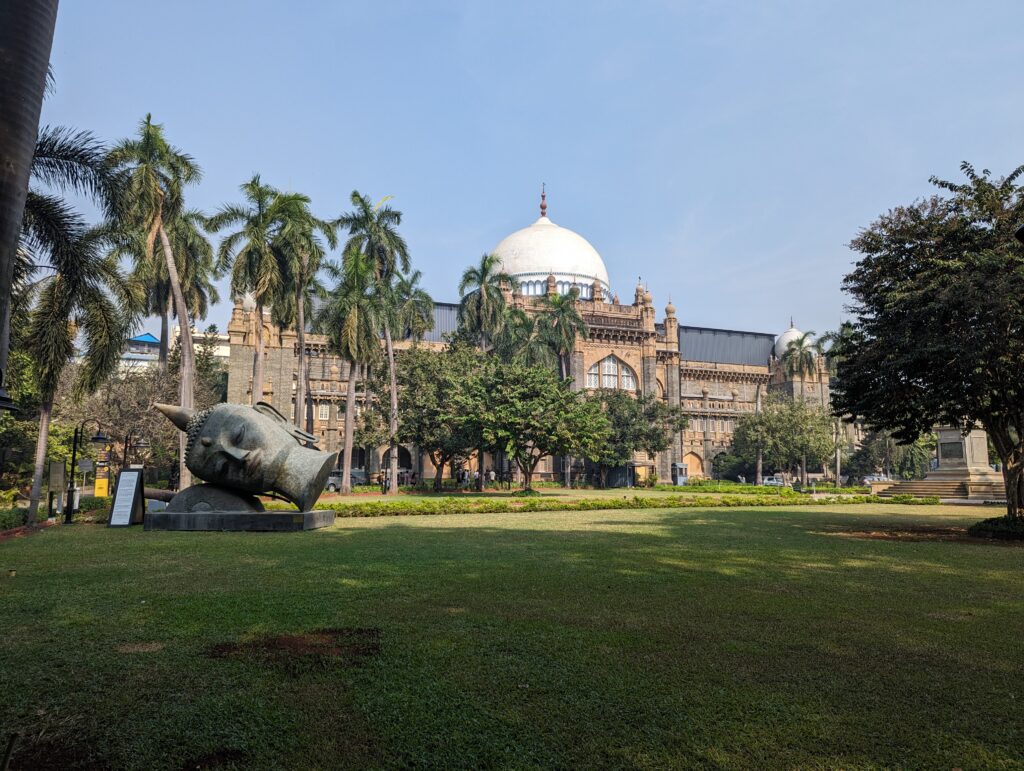
The Chhatrapati Shivaji Maharaj Vastu Sangrahalaya (CSMVS, I will always struggle with that name) museum, hosts a large collection of Indian art from all periods in a splendid Indo-Saracenic building. The temporary exhibition showcasing Greek and Egyptian pieces of art (mostly from the British Gallery) and related Indian art was the highlight of our visit. A history student, volunteering for the entire 10-month exhibition as a guide, approached us and explained all the pieces to us. The guided tour was amazing. The guide was incredibly eloquent. In Mumbai, the level of English is truly impressive. We could feel that it was primarily tailored to an Indian crowd because there were some basic reminders about Greek mythology Europeans would not necessarily need. However, it was so much better than the audio guide.
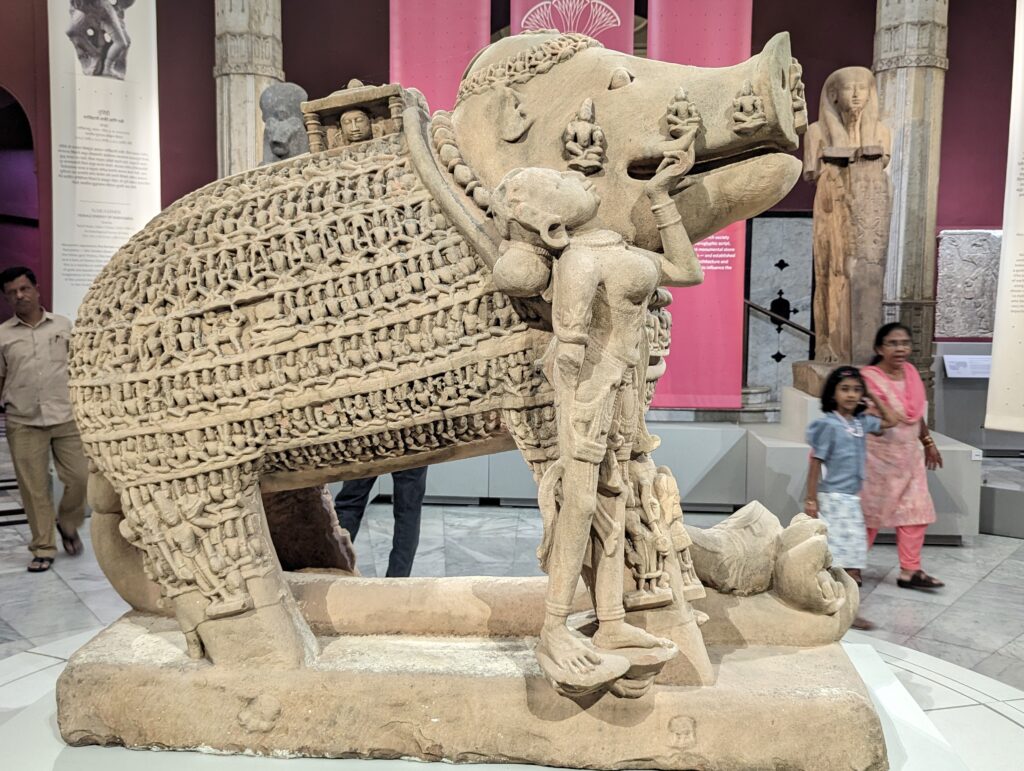
There were almost no rooms with air con. Y had some difficulties to recover from the hot walk to get there. The museum was totally worth it. I find it hard to decide whether to visit a museum based on reviews, guide books or blogs. In Chennai, it was the same price and same reviews, but this one is a lot better.
Bandra
Bandra is a trendy coastal suburb, home to many celebrities, and a place of choice for shopping, restaurants and nightlife.
The first Subko Cafe we went to was in Bandra. It was a 3-storey building mainly selling and serving coffee, restyled western/French pastries and healthy food. The beetroot sandwich was a delicious blend of Indian, Western and healthy food.
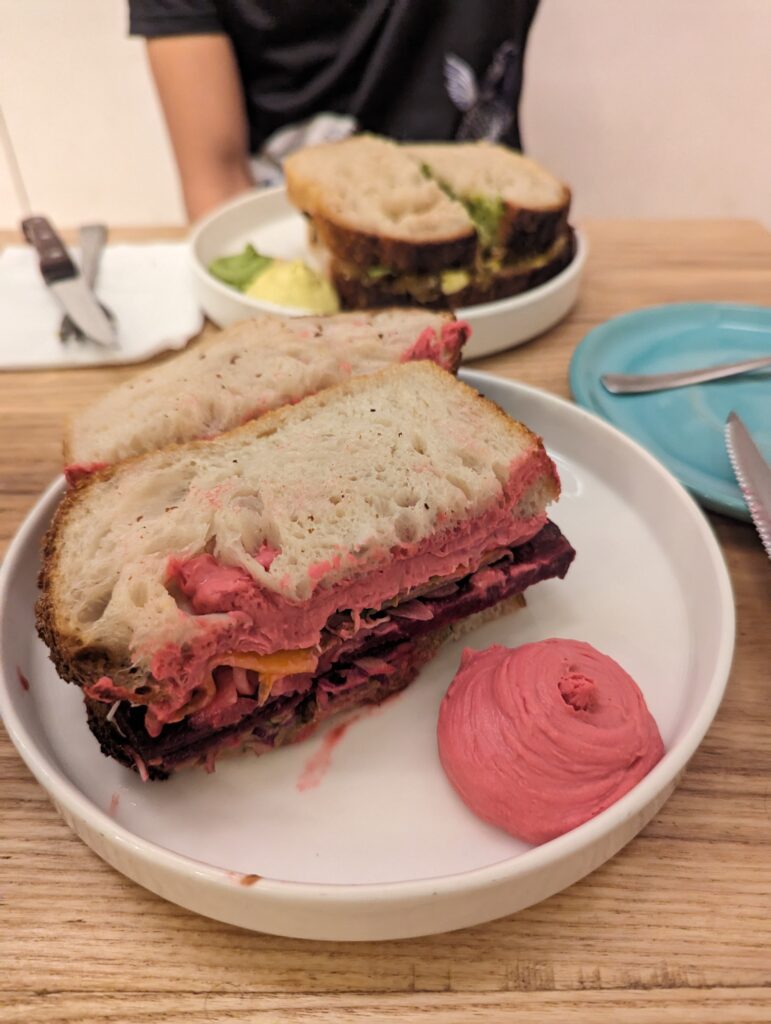
At the market, we saw counterfeit Quechua (Decathlon) brand T-shirts.
We had some chaat street food at Elco Veg restaurant in front of the Elco arcade mall. You can have them on the street or upstairs with AC. We enjoyed street food in an AC restaurant…
We walked on the waterfront promenade and stopped at the House of Shah Rush Khan. It looks too exposed to the public to really enjoy the balconies facing the sea.

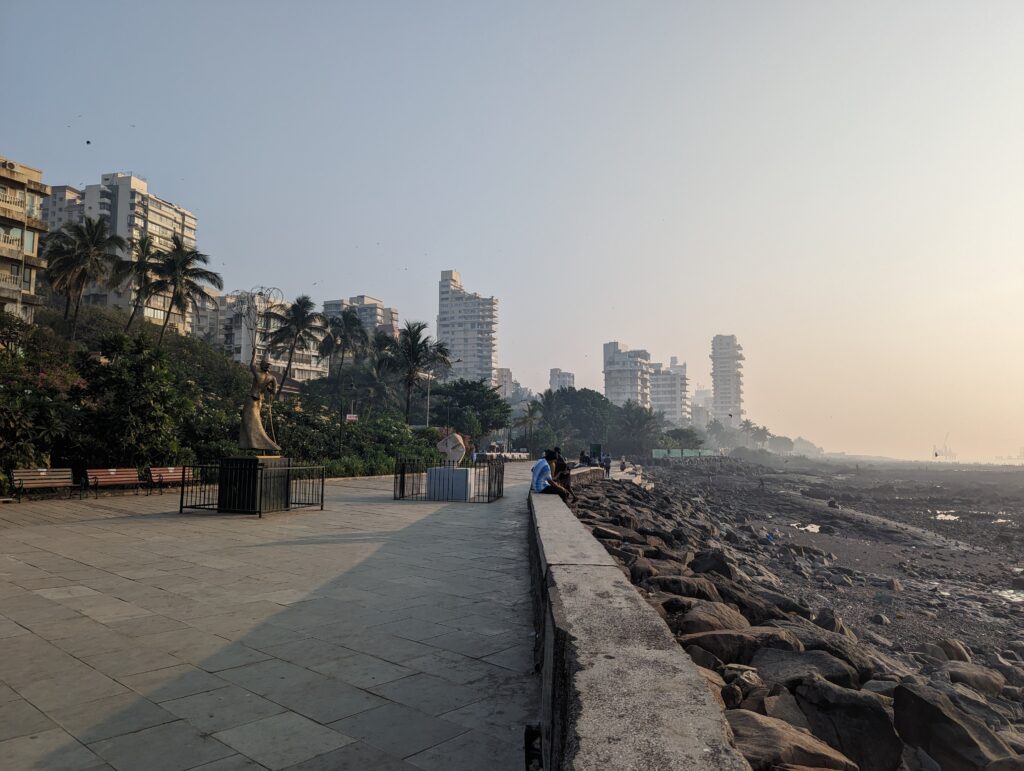
We could not access Bandra Fort at the end of the waterfront promenade.
The Taj Lands End was the most beautiful building we saw in Bandra.
We saw nice Christmas decorations in the affluent neighborhoods near the sea. Towers must have beautiful views on the ocean. But many of them are old and not well maintained.
Nightlife
We went to a club in Bandra. Sharan managed to get us in without entrance fees, although I was wearing a hiking short. He is good. It closed at 1h30 that day to be able to open late for New Year’s Eve.
We met Animesh, a generous Bandra party guy. We had some drinks and spicy wraps in front of the Sigiri Restaurant. The place opens late. The police came at some point to collect the bribe, so the place could stay open late according to a regular.
Lower Parel
The Palladium Mall is the only modern mall we explored in Mumbai. It is spread across multiple buildings without indoor connections, so the doors are often open. There is an outdoor area. We went to the Foo restaurant, a very good Japanese restaurant adapted to Indian taste, like most Japanese restaurant. It must be the most beautiful restaurant we have been to in India. The Dishes were small and delicious.
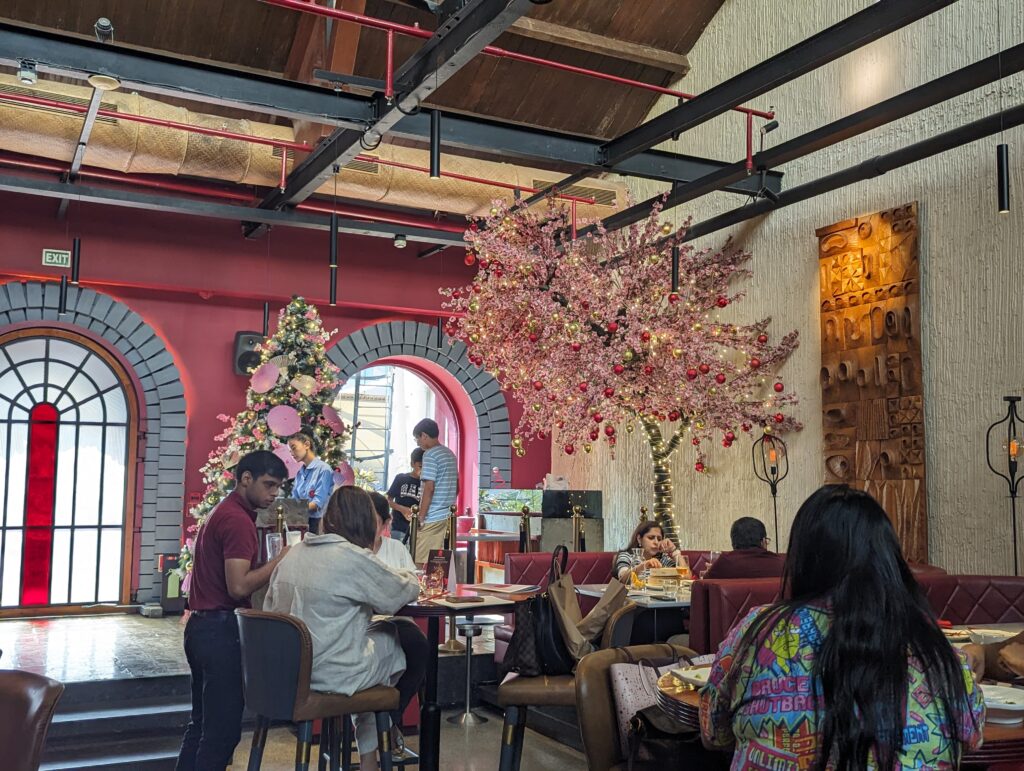
Cinema
Sharush Khan is on every cinema ads. It is harder to find movies with English subtitles compared to Chennai and Mangalore. We went to the cinema to watch Sam Bharadur. Bharadur means the brave, his real name is Sam Manekshaw. The story of his serious injury during World War 2 is incredible. He took seven bullets from a Japanese machine gun, was carried on a comrade’s shoulder for 20 km before seeing the surgeon. He recovered to become, at the end of his military career, the first soldier to reach the highest rank in the Indian army.
Dhobi Ghat
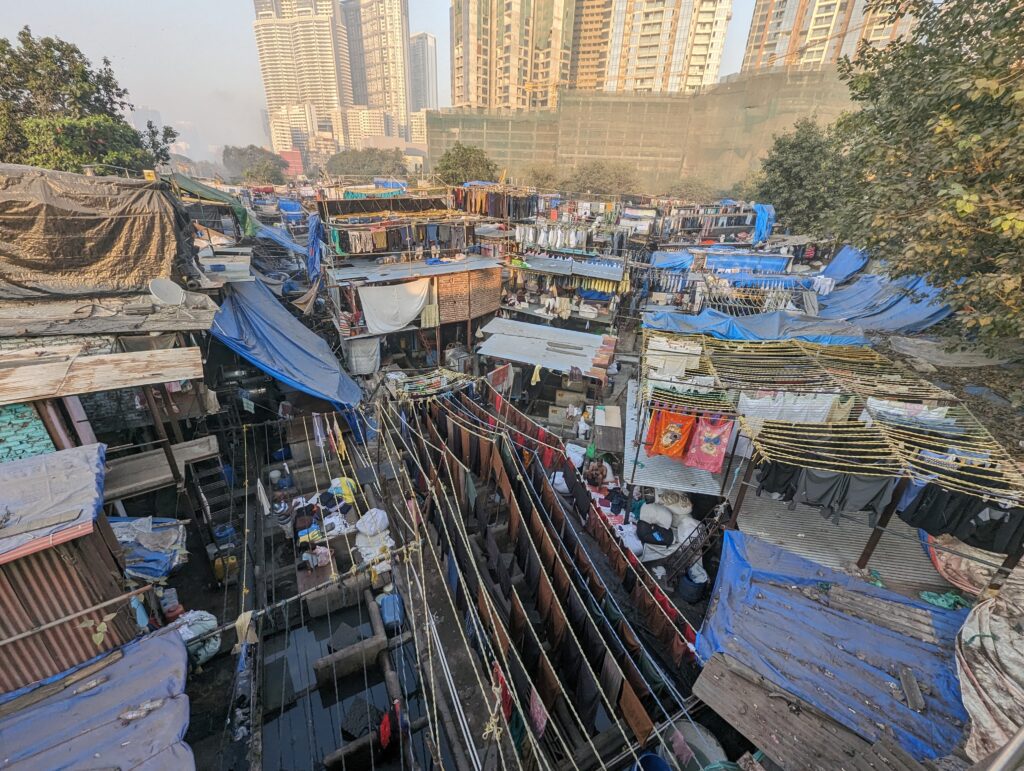
Dhobi Ghat is an open air laundry. 7000 persons, including children, live there and work in clothes cleaning. Luxury condos are built right next to Dhobi Ghat. They have a smart system, using twisted ropes, to hang cloth.
We thought we saw a building on fire in the distance, or is it an illusion with the sunset?
We want to Butterfly High, a reasonably fancy restaurant, and really, enjoyed the food. The place converts into a club later in the evening. On the same street, there are a couple of relatively high-end restaurants that also host parties later in the evening.
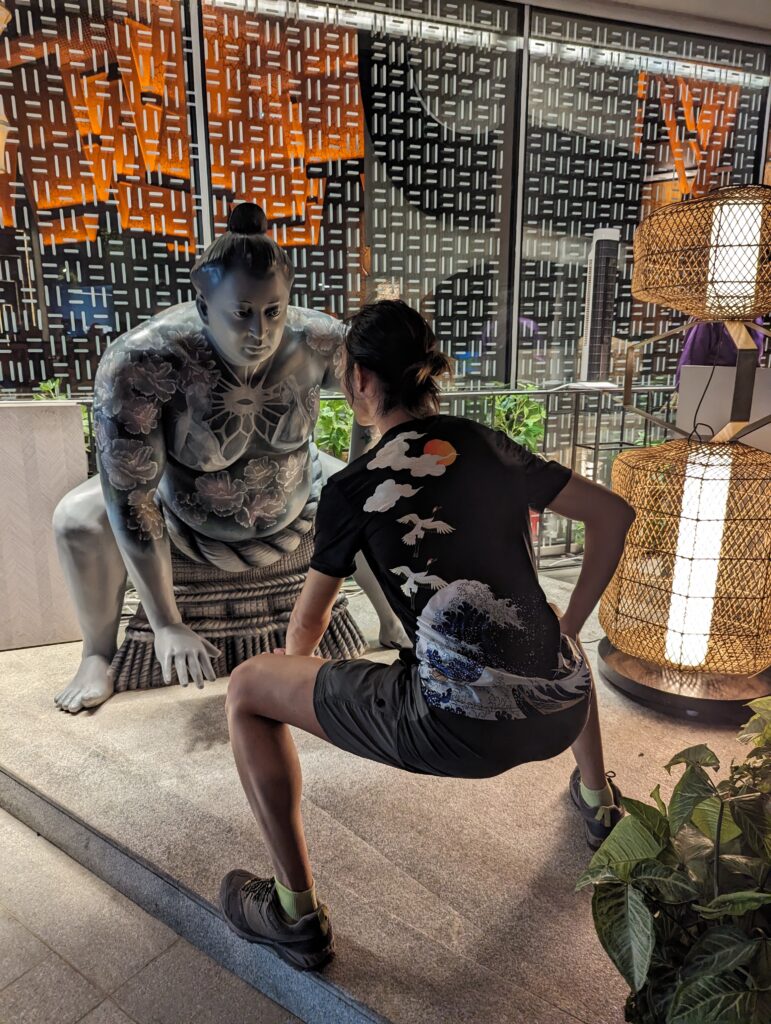
High-end restaurant
We wanted to experience gastronomic Indian food. We waited until the end of our trip to make sure we had a good grasp of the popular flavors the Indian cuisine had to offer.
The reservation was made at Trèsind for Christmas Eve. We booked online and confirm by calling them with the cellphone of receptionist (We spend 7 weeks in India without a local SIM card). There was a Christmas playlist but no one wished us merry Christmas.
We booked a taxi taxi (yellow and black cab) with Uber. The taxi did not have air con, the windows were open and we inhaled too much pollution. It took a wrong turn twice, we got stuck in traffic and delayed by 30 min. They told us we were part of the first service, and we had 2 hours to eat.
We arrived at 7:40 (40 minutes late) and left at 11h30.
We had 14 courses. Prepared cocktail in front of us. the staff apologized for having mosquitoes in the restaurant and gave us a hand sanitizer once we claped one haha. The presentation of the khichdi dish called “Map of India” is impressive.
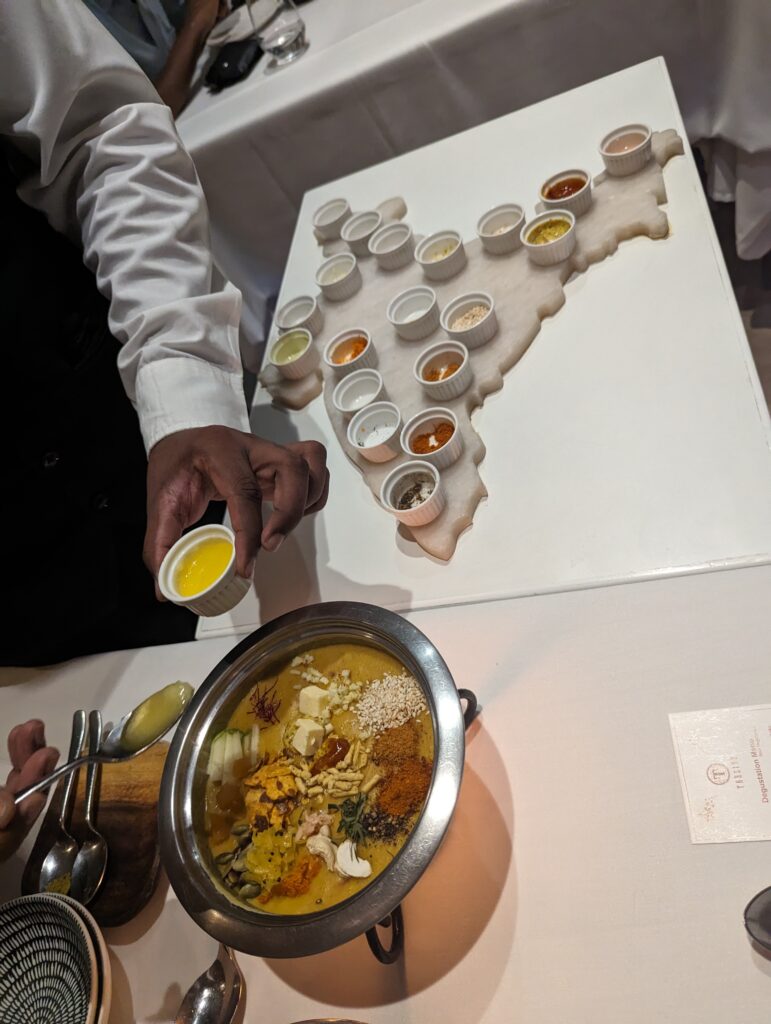
It cost more than 30 times the price of a simple meal.
It was worth it. The food was delicious, the best we had in India. The food remained close enough to traditional the Indian cuisine, it did not venture too far to experiment with a lot of new tastes and bold associations of tastes. After only 7 weeks in India, I was not very surprised by the dishes, they were a bit too familiar. It is a great restaurant, but it does not beat Kuuk, a restaurant in Merida, Mexico, which is the best non-French cuisine restaurant we have been to so far.
We took one veg and one non veg menu. The dishes are overall very similar except that the meat does make a positive difference I think. The price difference is insignificant (less than 10 %).
I confused the homemade mouth freshener with another dessert. It’s the only thing I could not finish.
Even if Y told them in advance she does not like coffee, at first they just removed the coffee dessert without replacing it. But as we asked for a replacement she did get something!
Dharavi Slum
We booked a free walking tour on GuraWalk with Balaji. Joe Comer’s blog (the American we met in Izmir) encouraged me to visit this place. And he has Balaji as a guide as well!
The meeting point was in front of a café. We decided to arrive early and wait inside the café. That was a good idea, we were on time, even 30 minutes early, and we could comfortably wait for the other people who were late of course. Mumbai is big and congested so we don’t blame them.
A slum could be defined by improper housing and lack of ownership about the land. More than 50 percent of the Mumbai population lives in slums, in the sense that the land was not properly purchased. Dharavi is the biggest slum. However, today, constructions are mostly permanent, the infrastructures are improving, and inhabitants are paying a very law amount of money to occupy the land. The problem is not completely resolved, but most slums are not really slums anymore.
Communities which arrived earlier have more space. Those which arrive later built houses very close to each other. On the smallest streets where we walked, the building are so close that you can barely see the light of day.
The main industries are recycling, leather, and pottery. Four tons of plastic are processed every day. The plastic recycling is impressive.
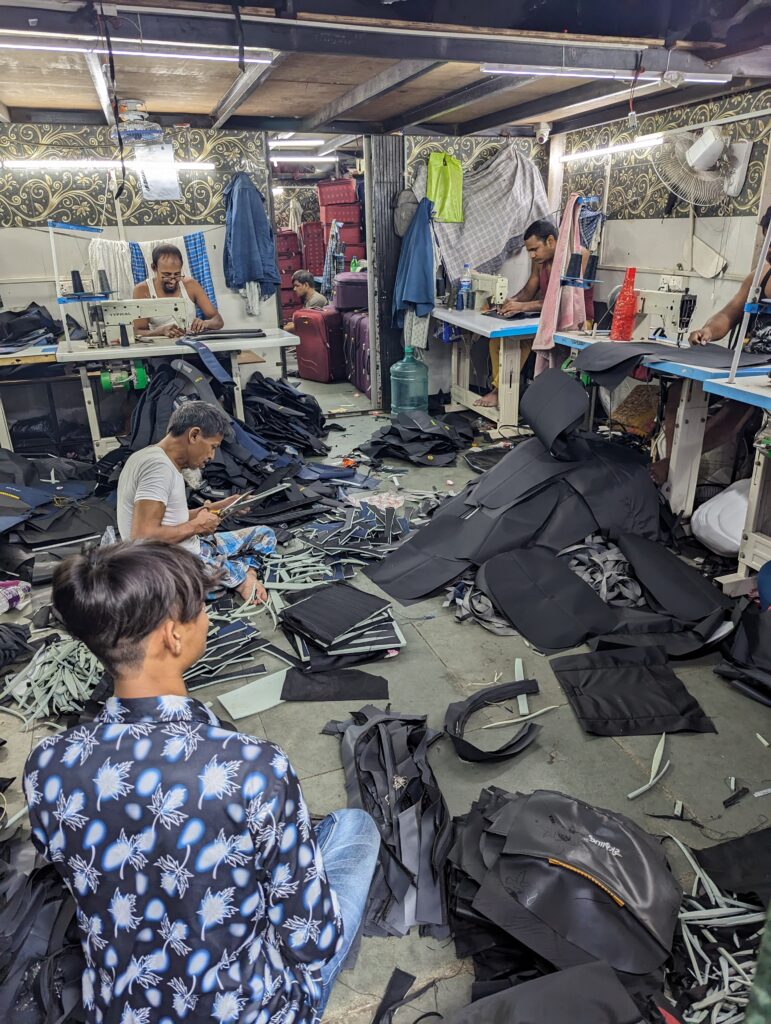
Balaji told us a non-skilled employee working in plastic recycling, for instance, could make a 10,000 rupees salary plus food and accommodation.
Kids wanted to high five. Since COVID-19, I’m not a big fan of contact with strangers. The German and the Brazilian were not letting the kids down.
Balaji’s community is in the flower business. The Brazilian had her hair braided with flowers.
Balaji encouraged us to taste the Bombay sandwich. It looks good, but I prefer when the one cooking is touching only the food, most of the time with his hand, and another is handling the money.
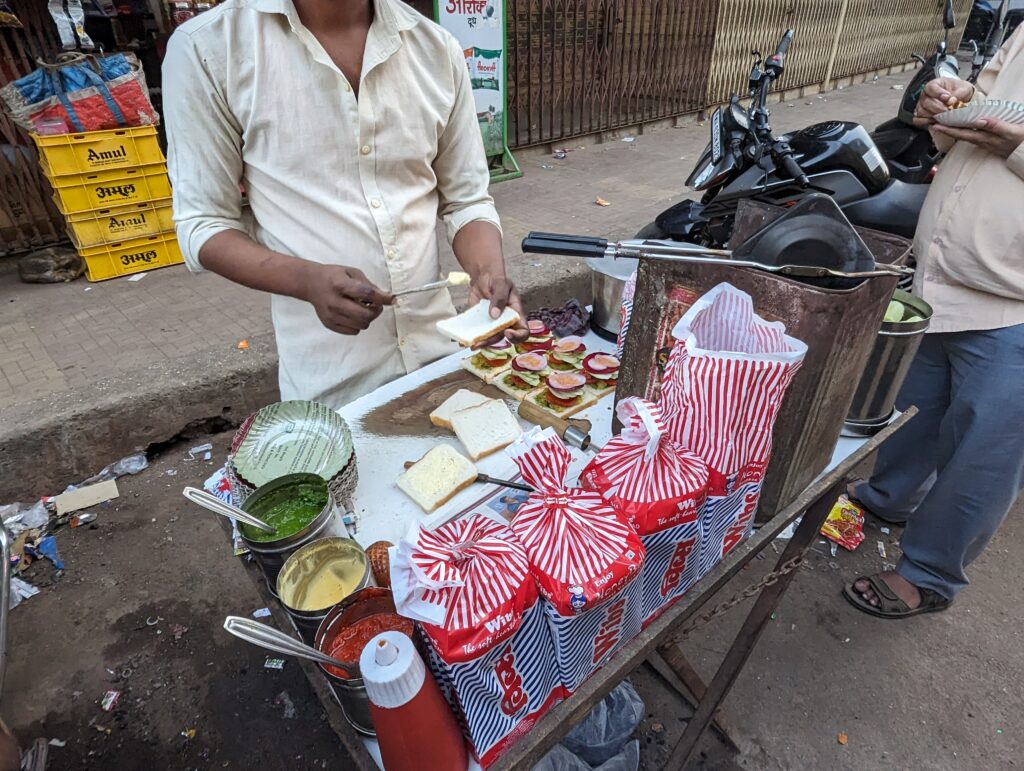
We tipped 1000 rupees, we thought it was not a lot, but Sharan told us it was significant. I still don’t know how much I should tip!
After the visit, we looked for a Chai cup for Y collection. They were sold by packs of 10 at least. He refused to sell an individual cup and offered it to us. We grabbed a beer with Balaji, the other tourists and another guide.
Later in the evening, we had some delicious falooda at Baba Falooda. Falooda reminds me of a Three Color Dessert (Vietnamese drink/dessert) with kulfi (Indian ice cream) in it.
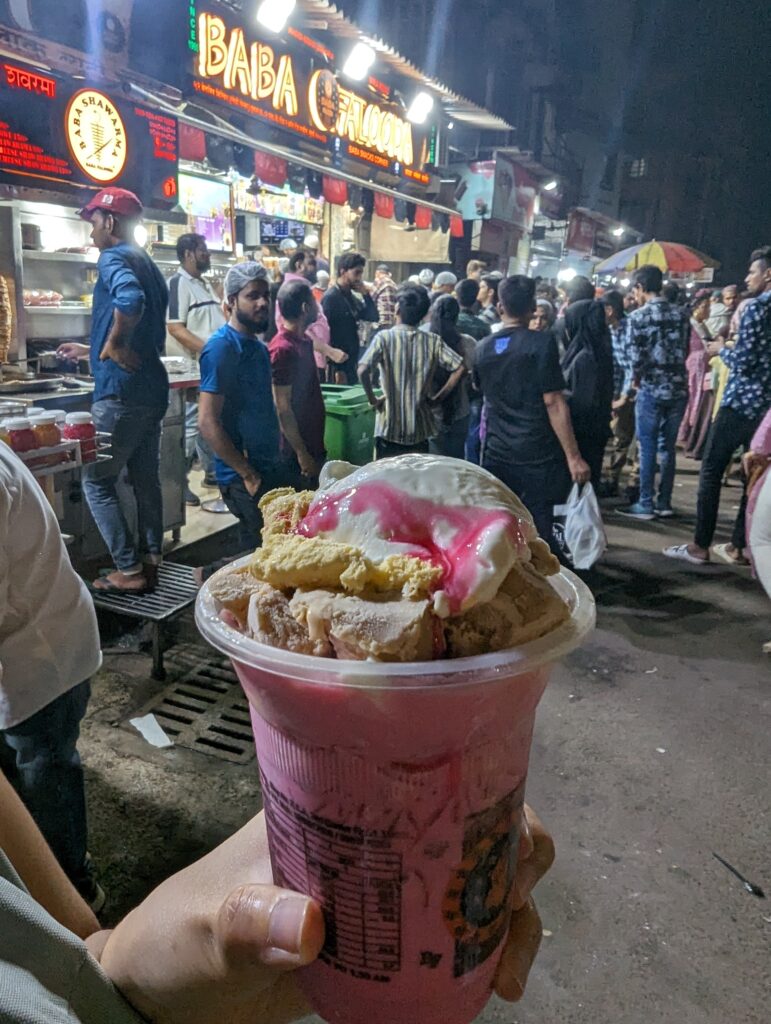
The beach
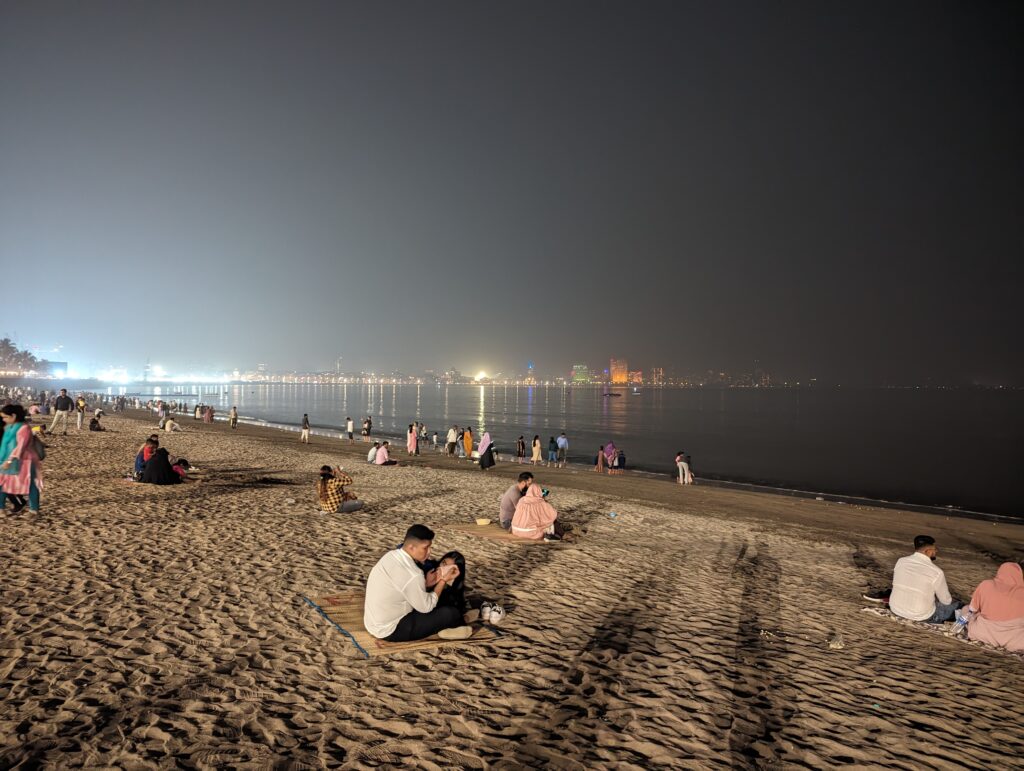
On Chowpatty Beach, people usually sit on a mat, not directly on the sand. People do not bath. Only their feet go in the water. Guess it may be due to the water pollution.
One afternoon, we just chilled around the beach at 3 Waves Coffee, the foodcourt/hawkercenter of the beach, and then Revival restaurant, excellent veg food and good view on the beach and sea.
Not far from there, we visited the Home of Gandhi. There were many photographs, historical documents, quotations, objects which belonged to him, and important scenes of his life represented with dolls. I enjoyed the visit because the life of Gandhi is fascinating. It reminded me of the book ‘La nuit de Maritzburg’ that I read 10 years ago about Gandhi’s first fights for justice in South Africa.
Hotel
The Hotel was near the beach and Grant Road train station. Deluxe rooms were facing the street, pretty noisy. For a couple of days, construction work made a lot of noise for approximately one hour around midnight. We extended our stay directly with the hotel for 3100 instead of 3700 online.
For Next time
This is what we could do next time in and Around Mumbai: Elephanta Caves, Sanjay Gandhi National Park, Agenta and Ellora Caves (4 days to visit the 2 sites), Pune, eat vada pav, visit Bollywood sets, Hanging Garden in Malabar hill
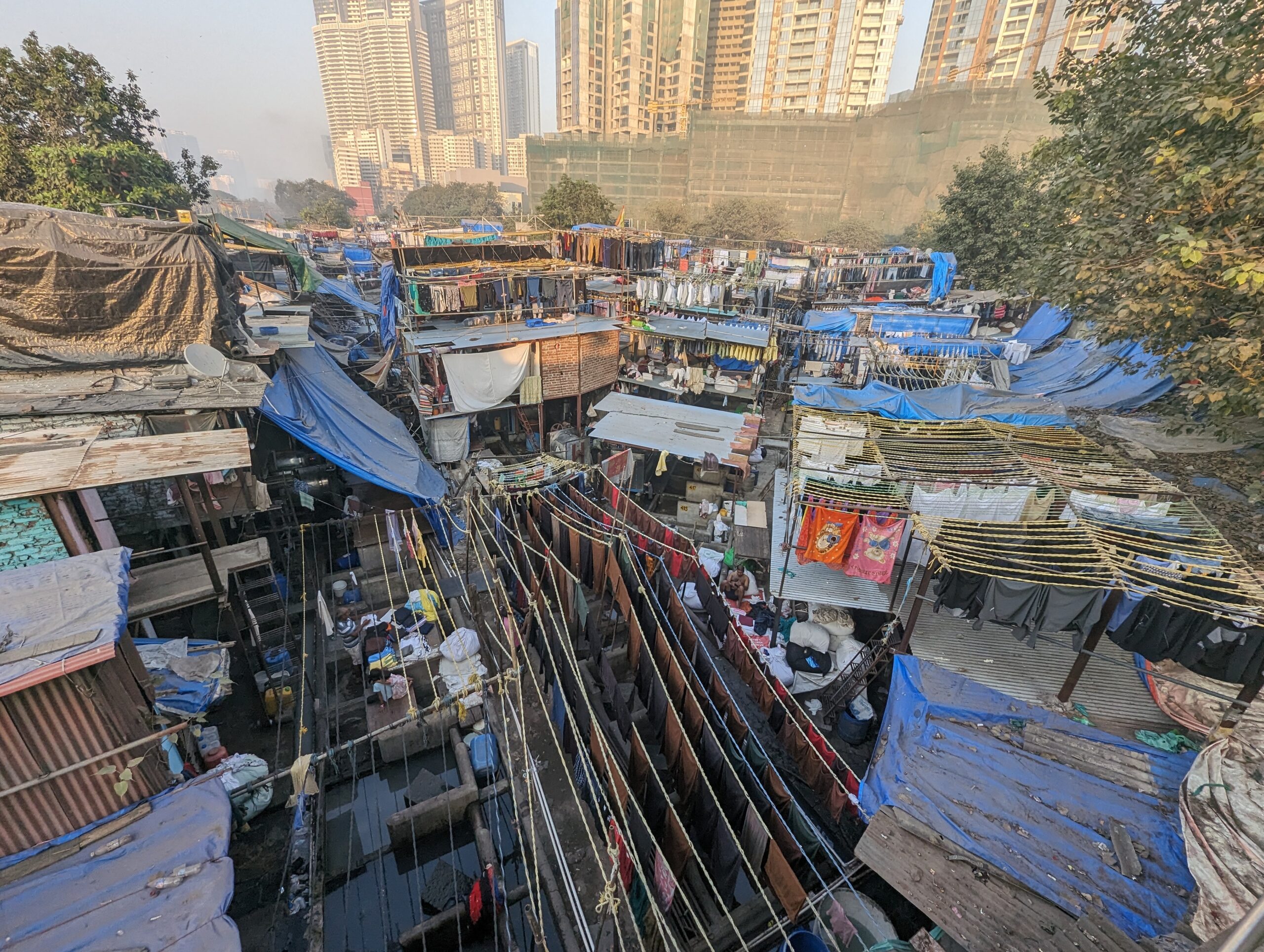
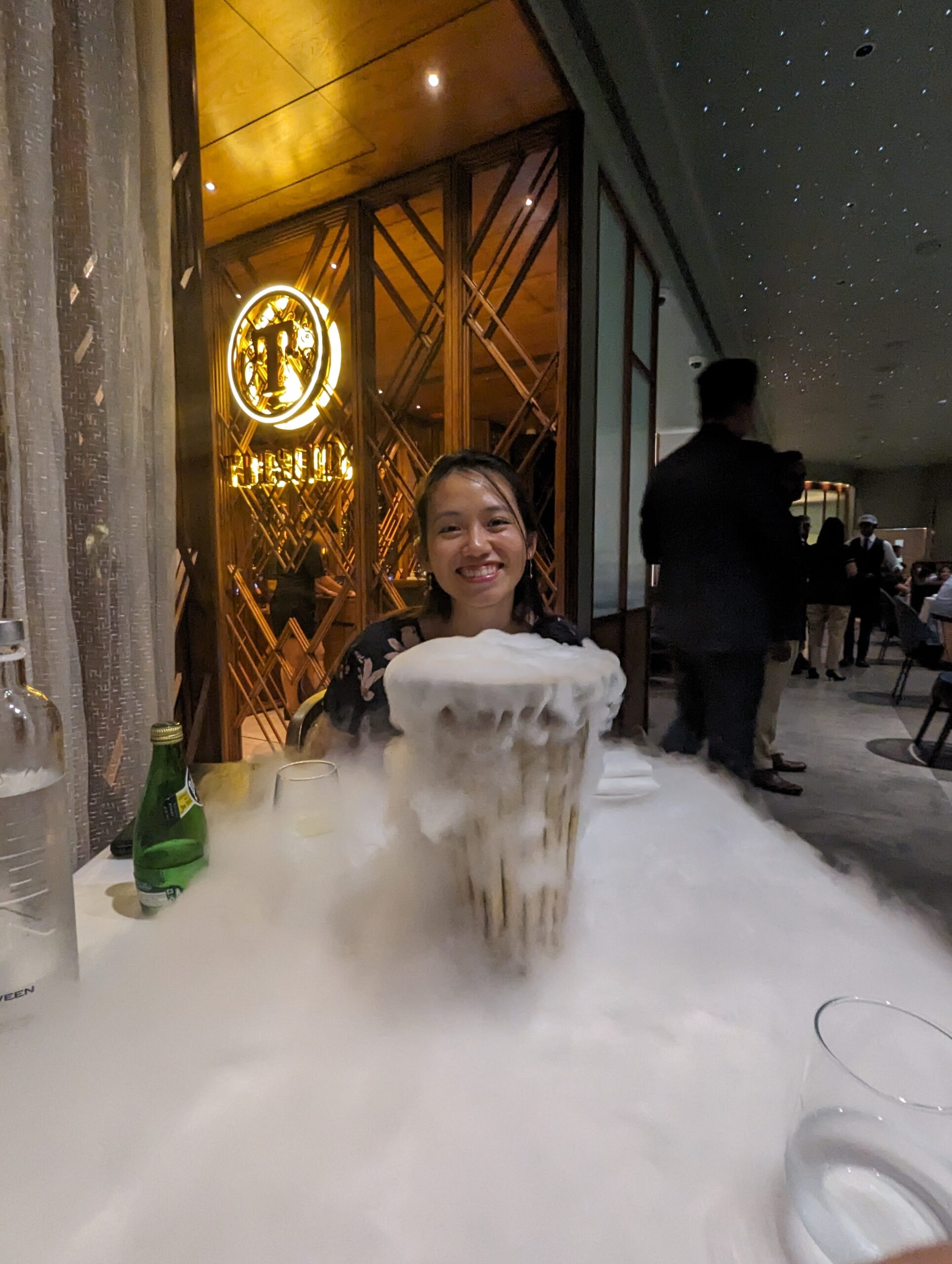
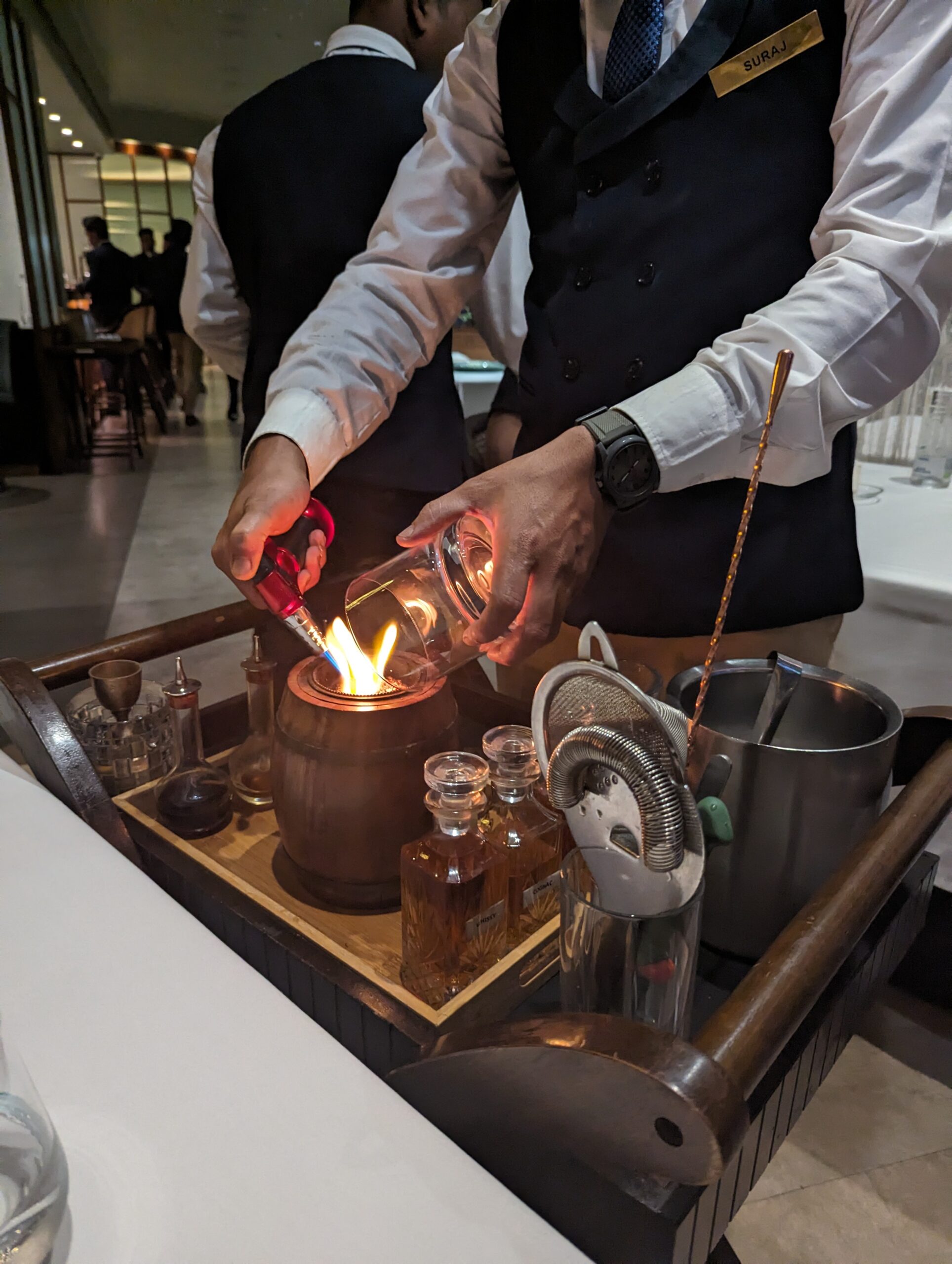
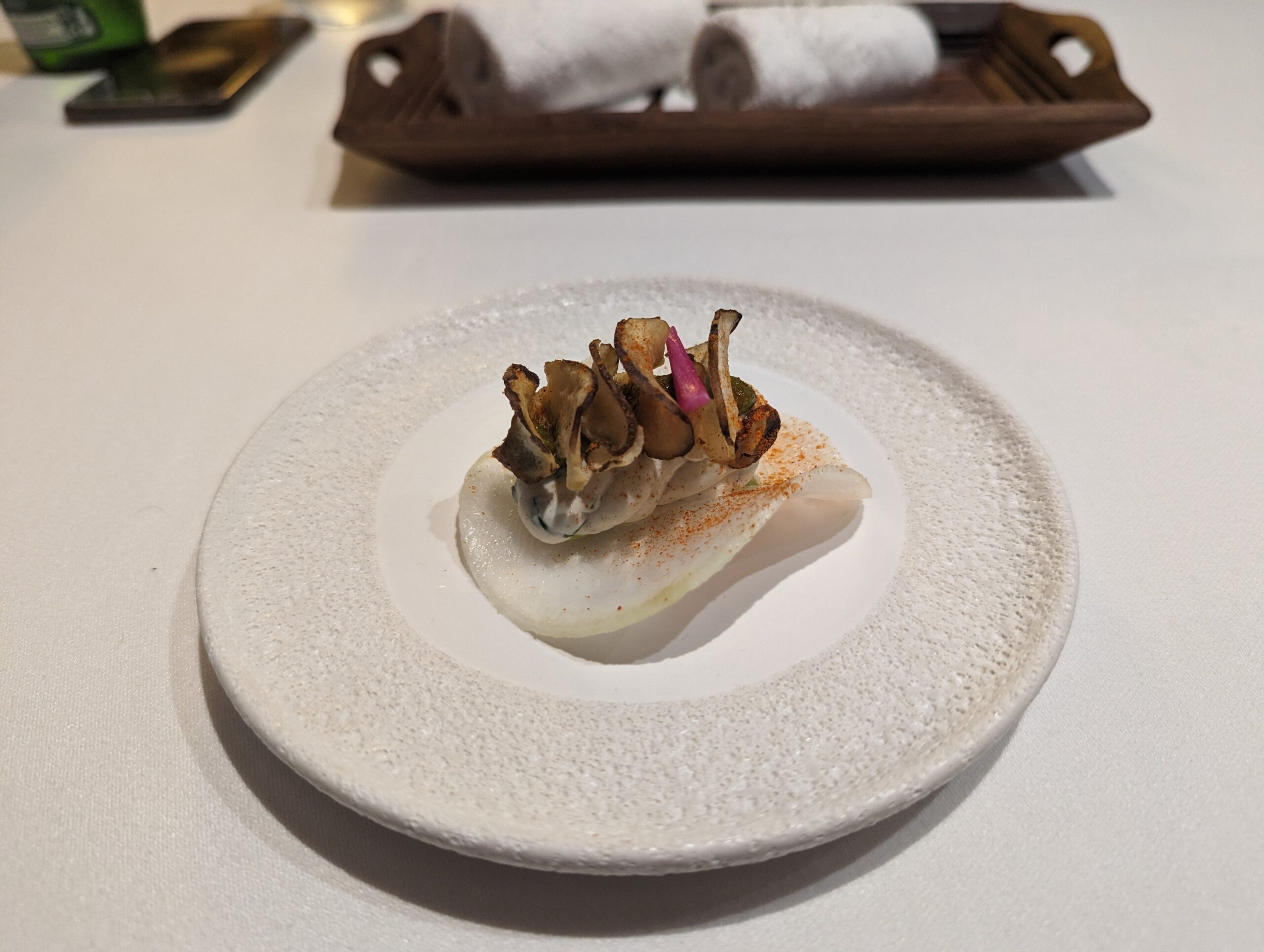
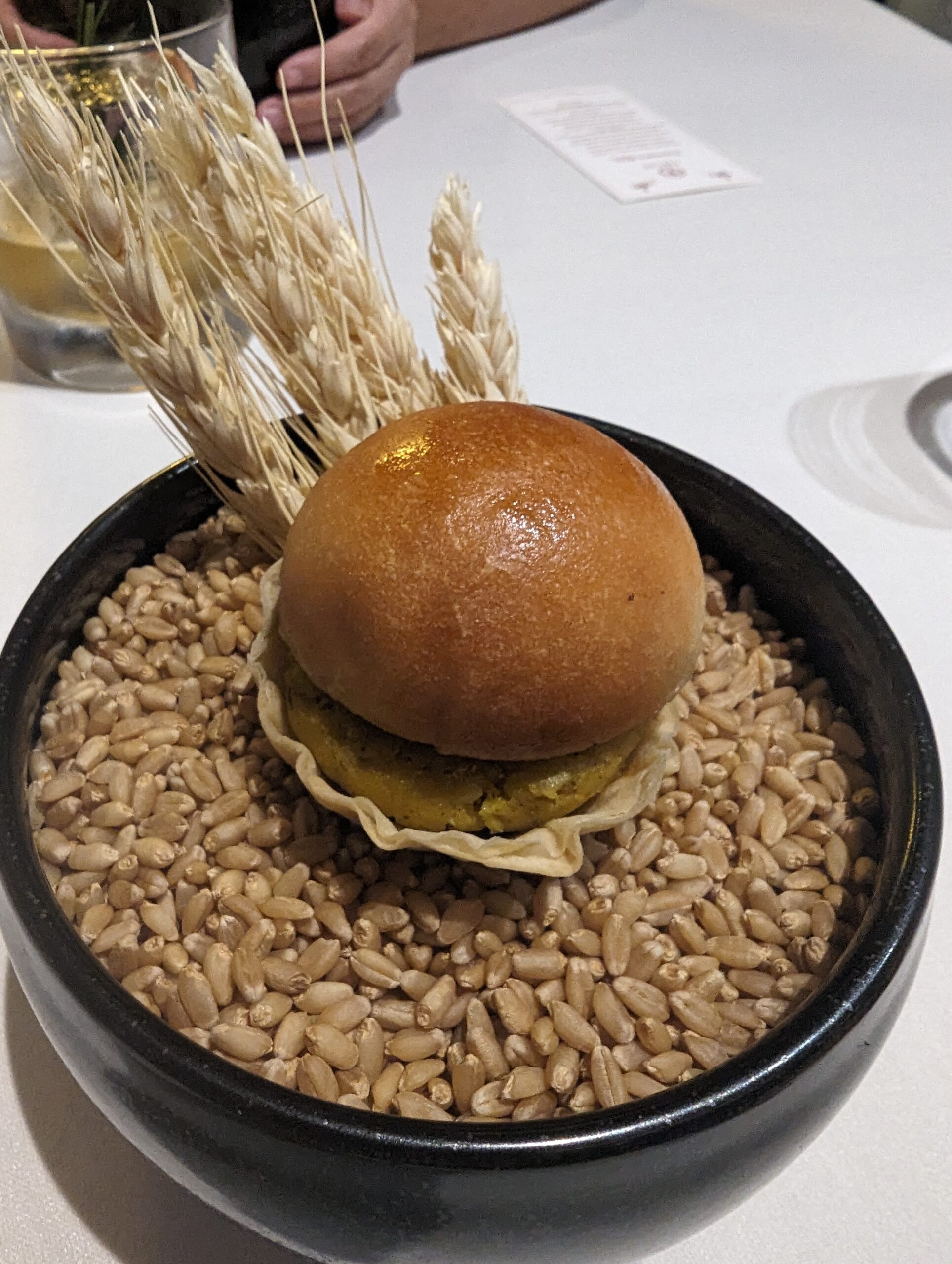
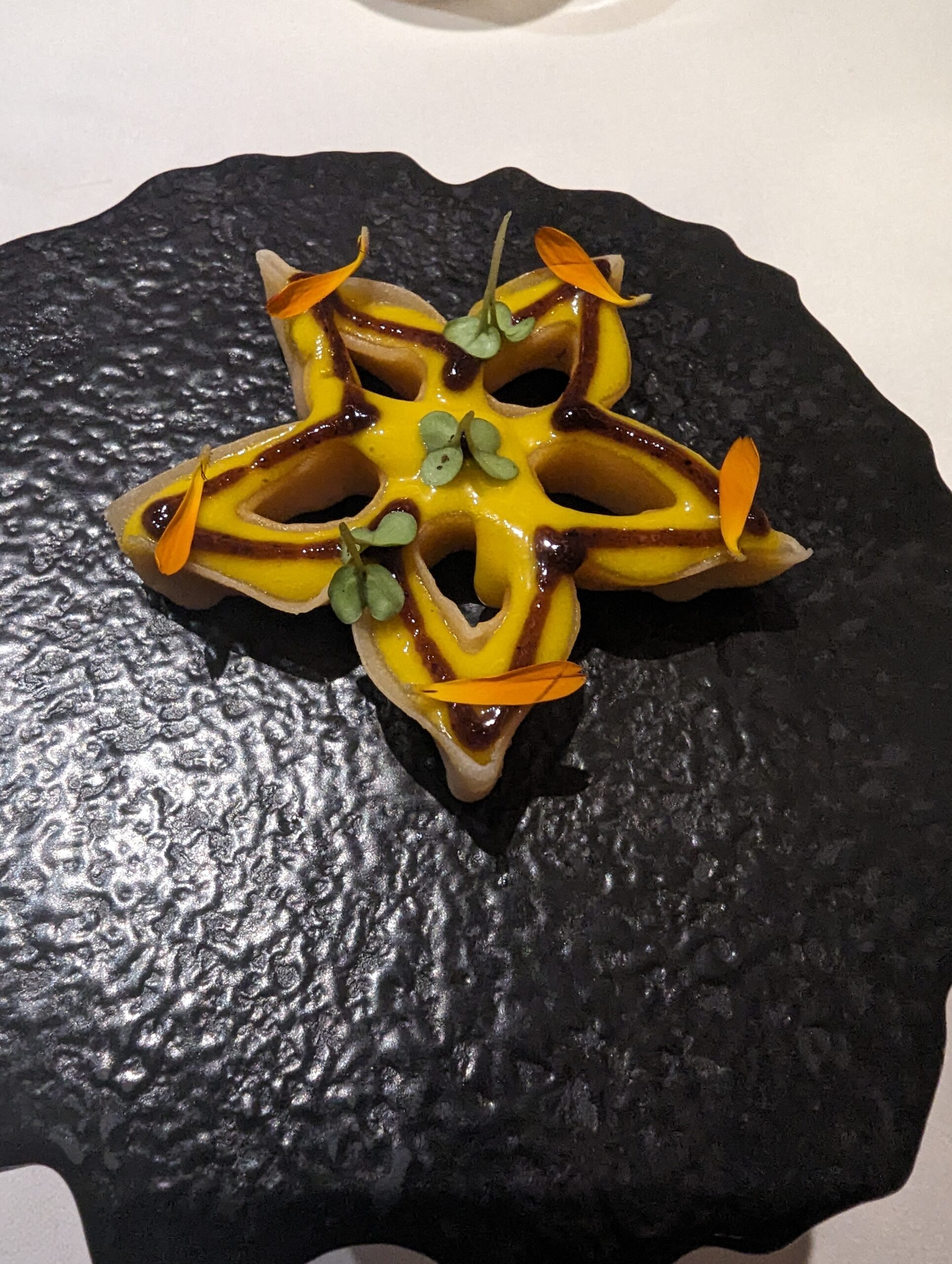
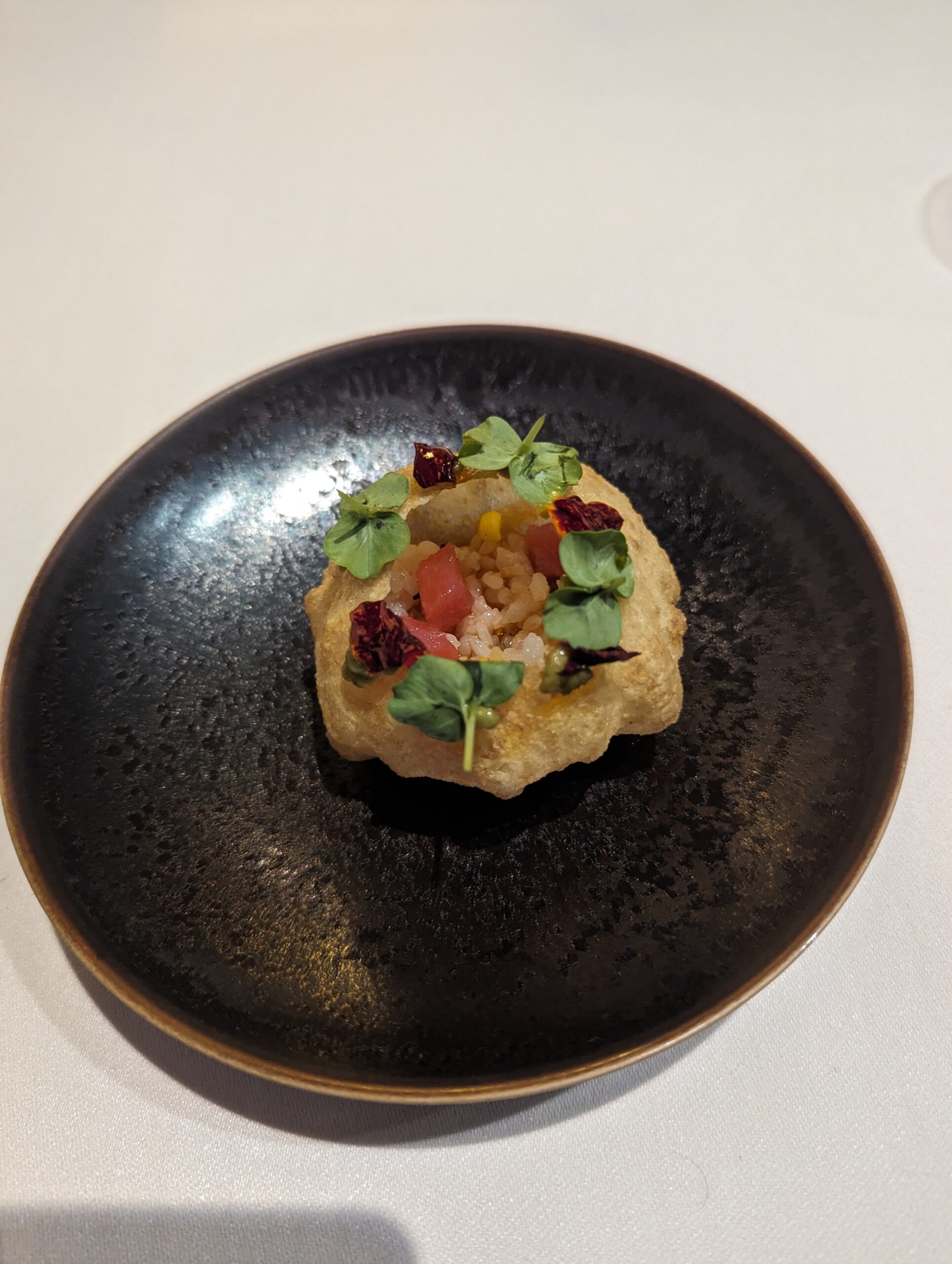
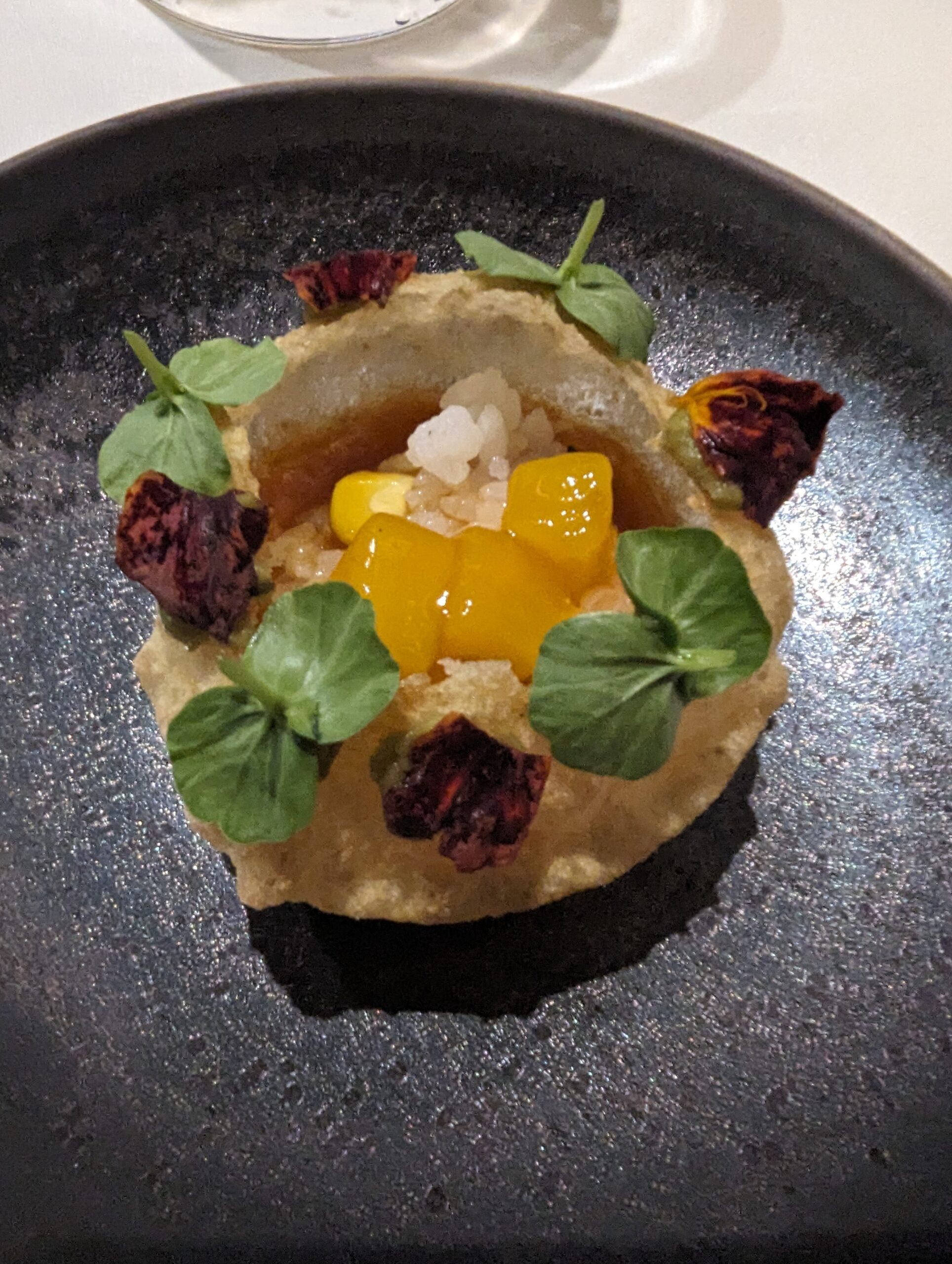
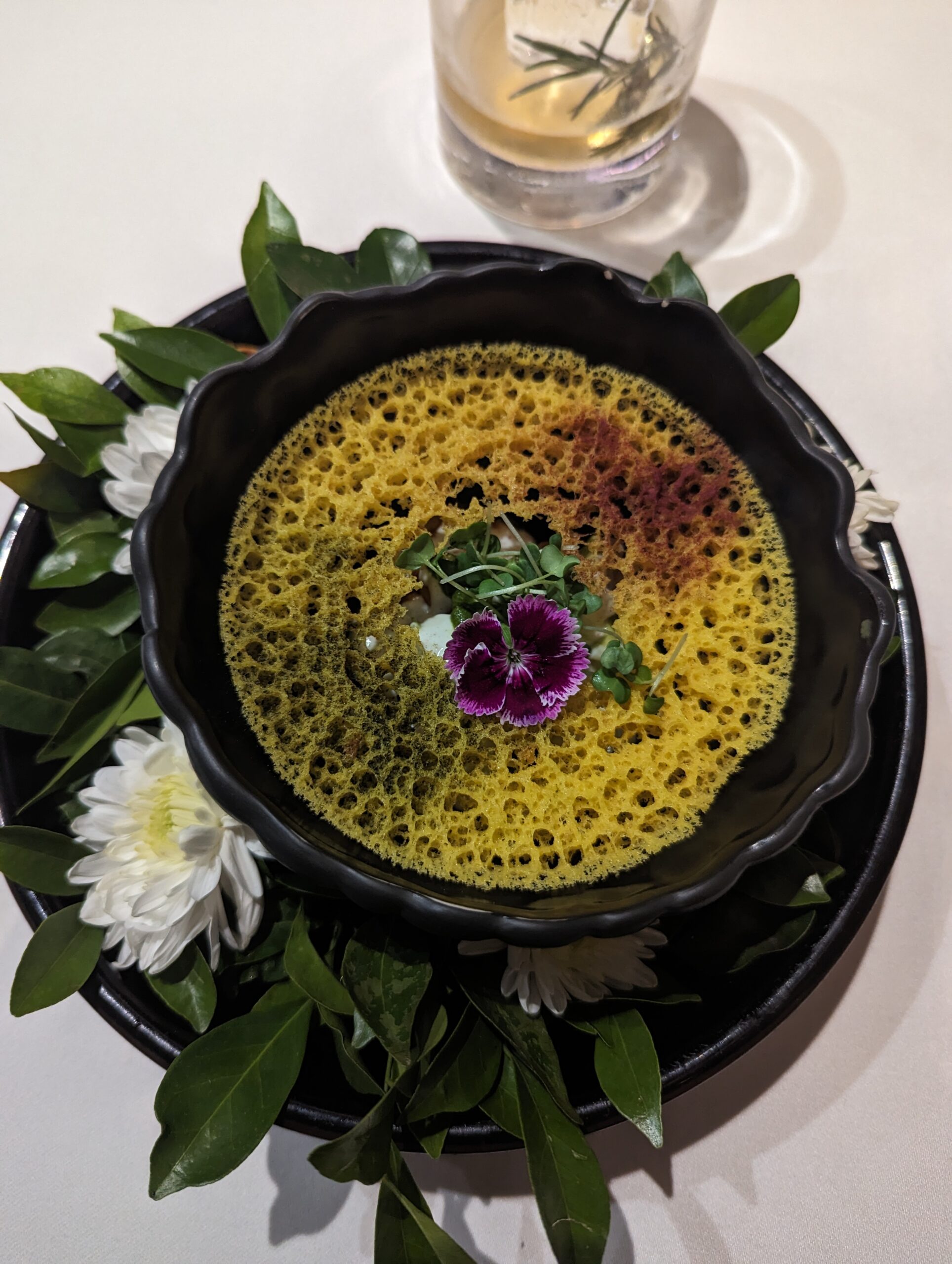
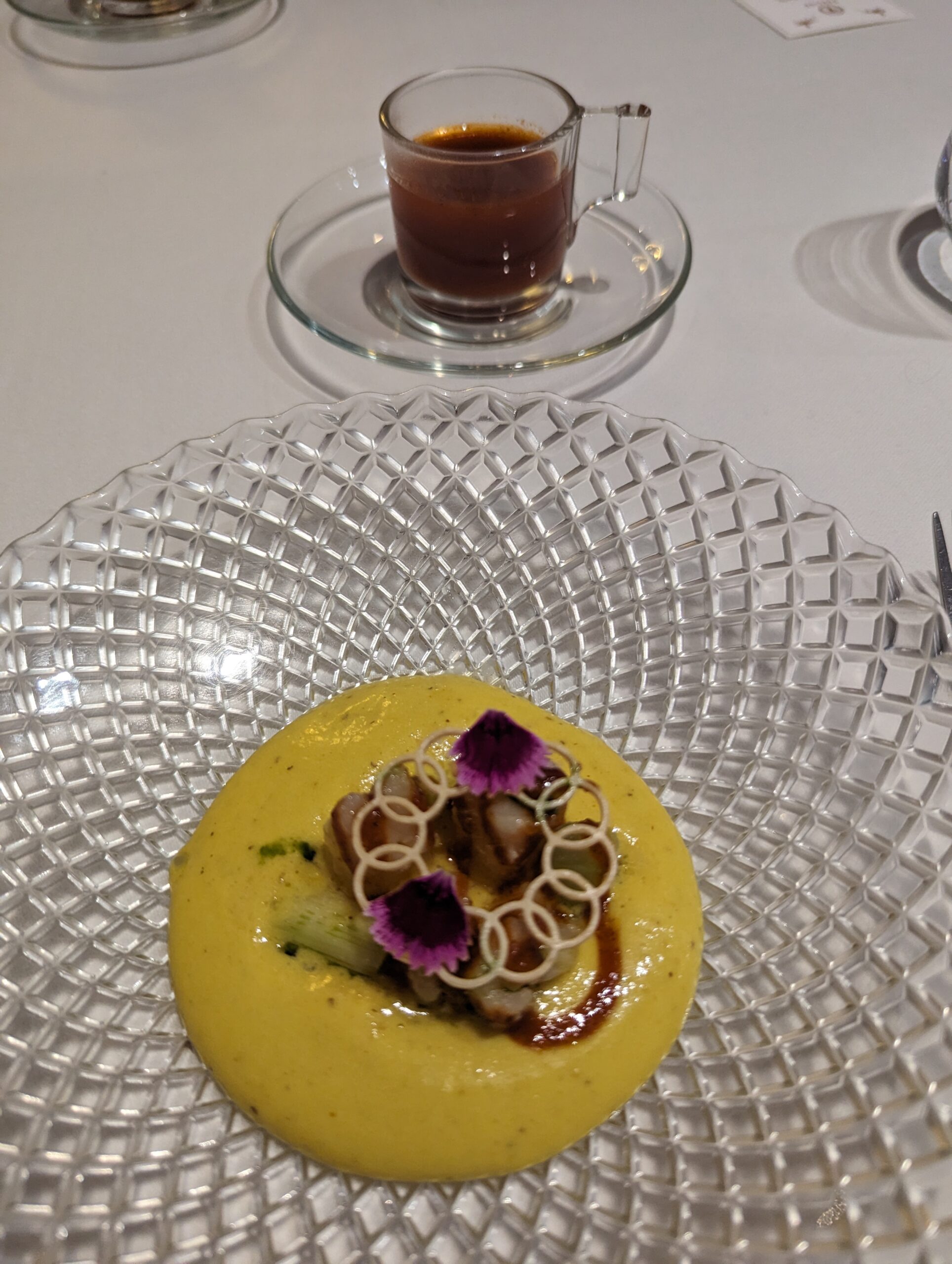
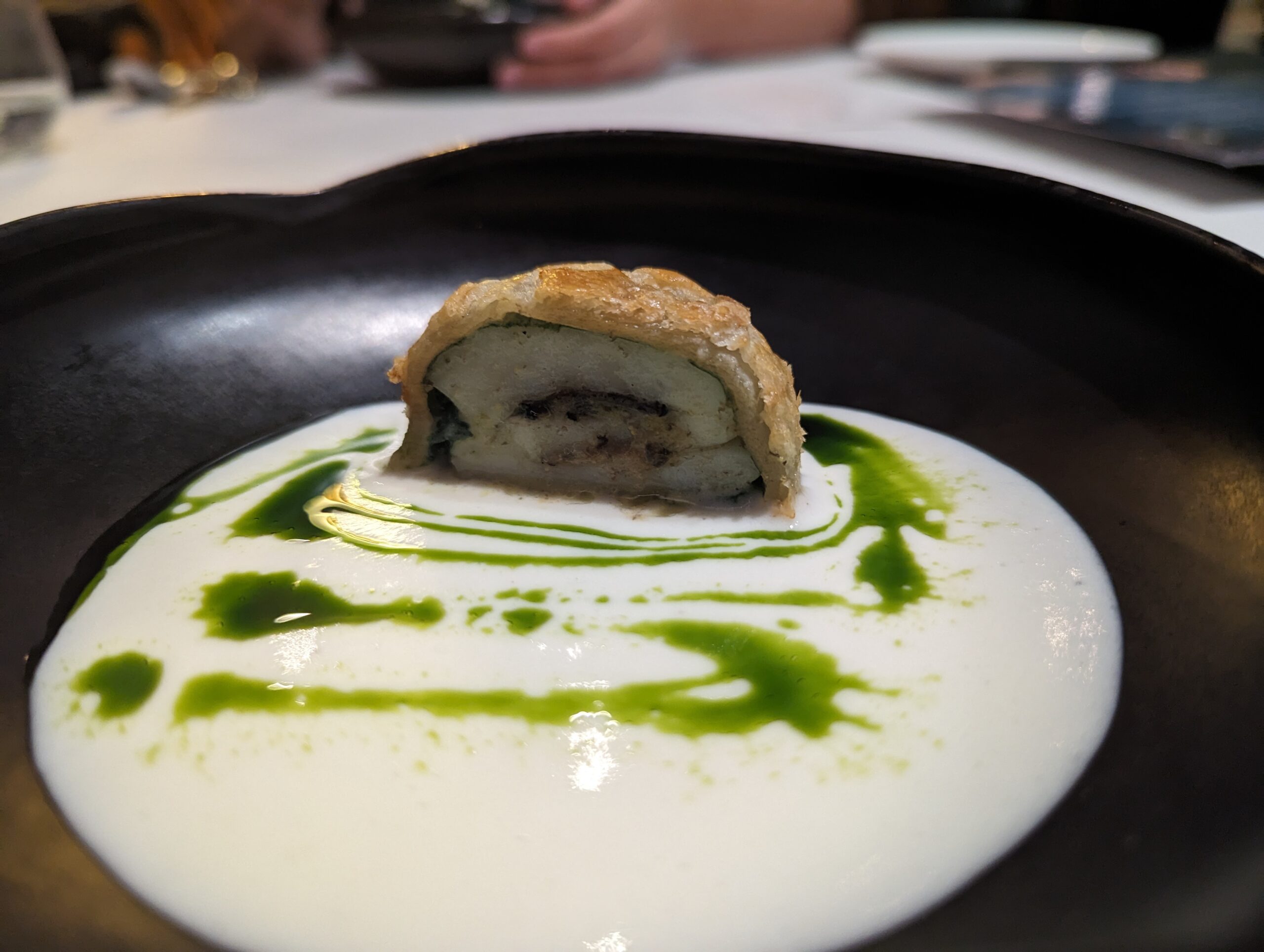

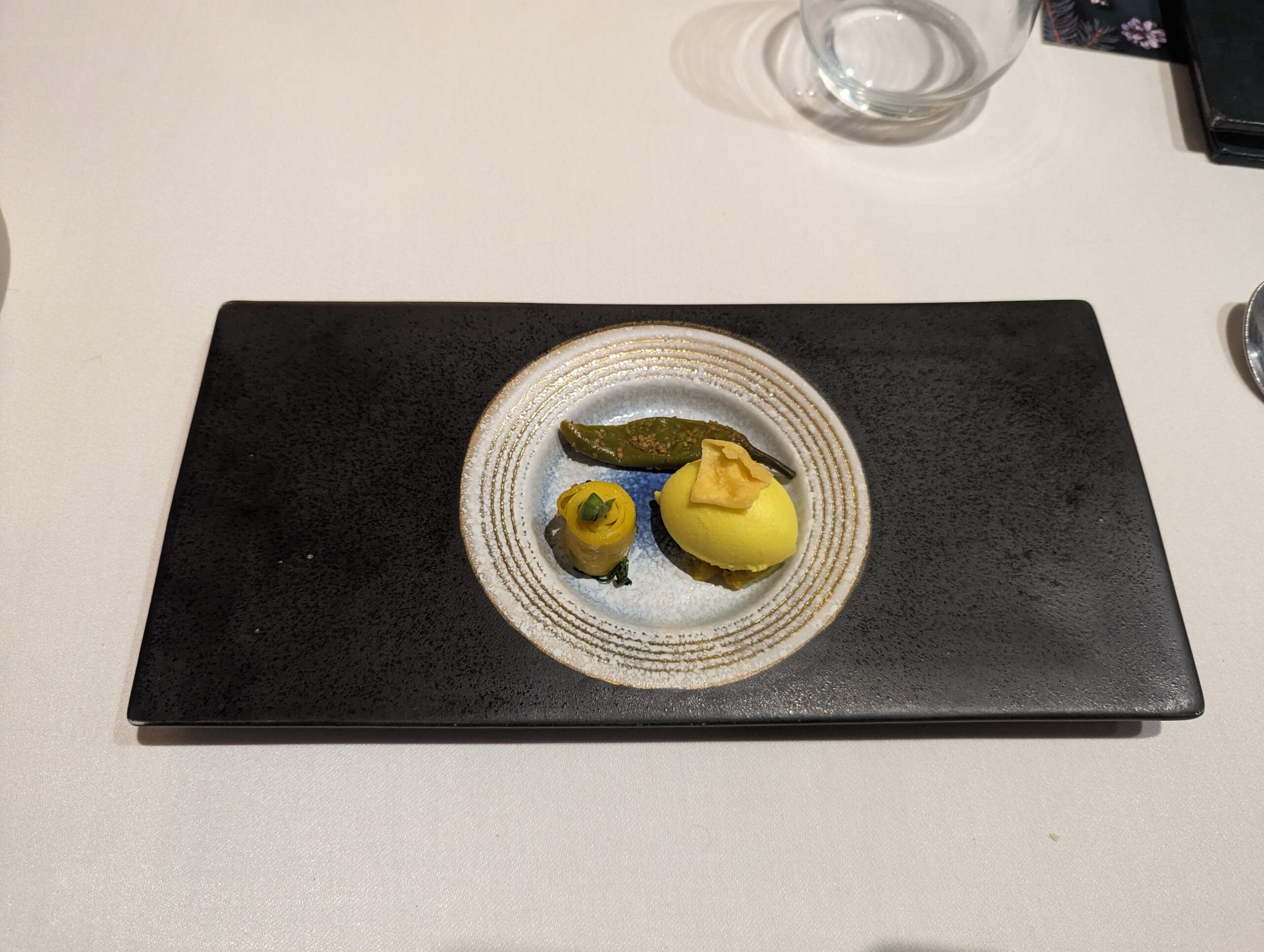
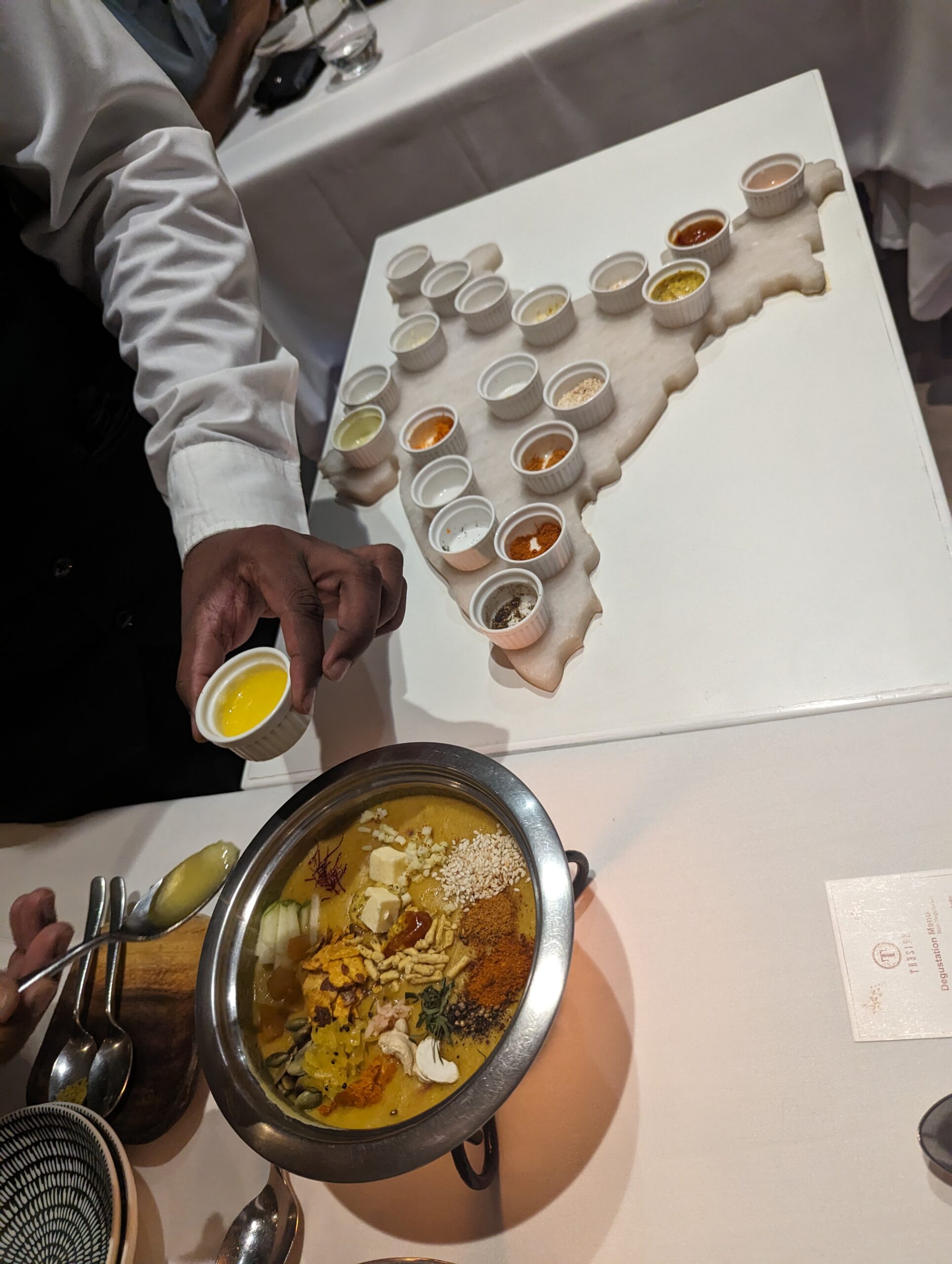
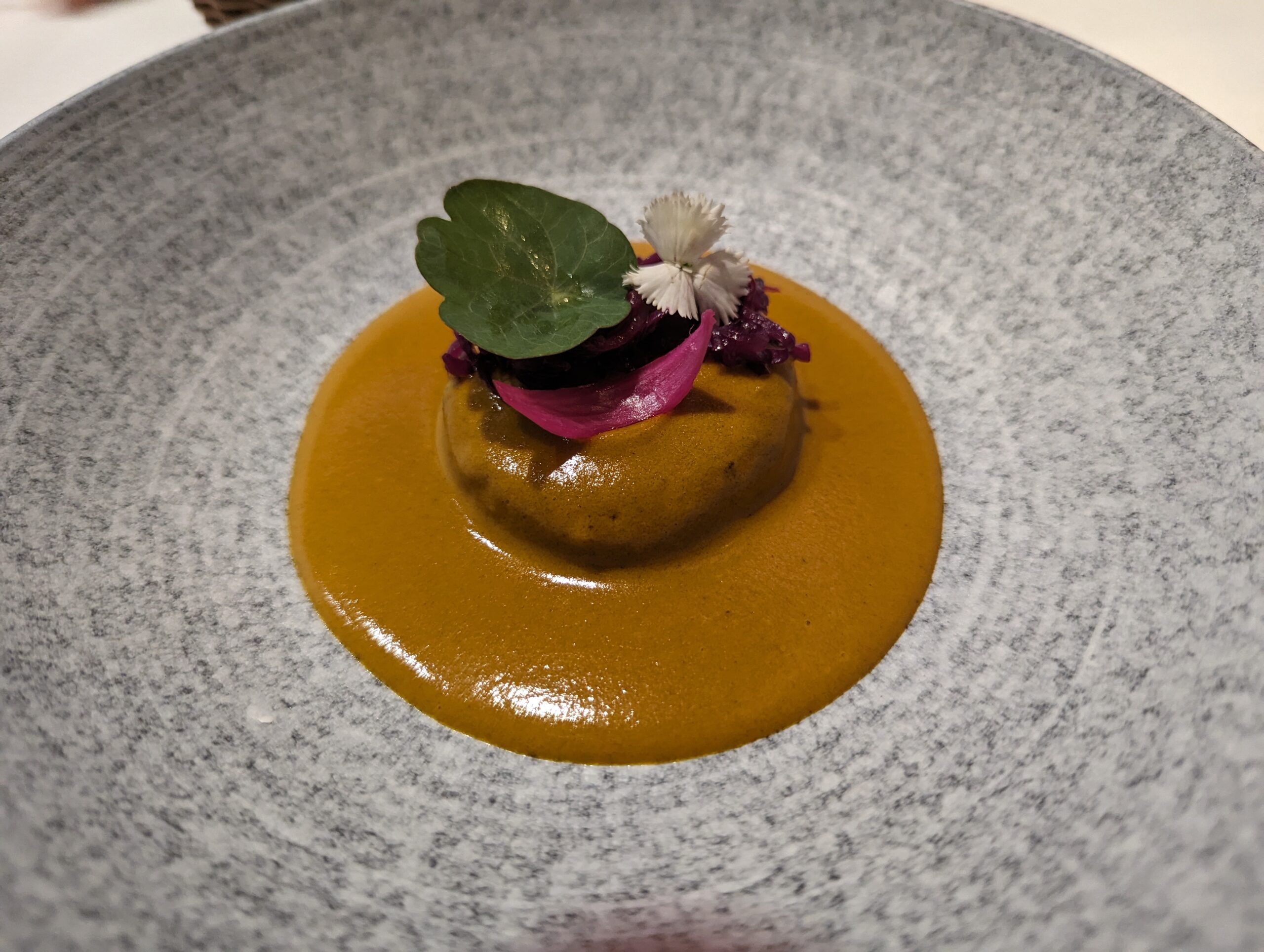
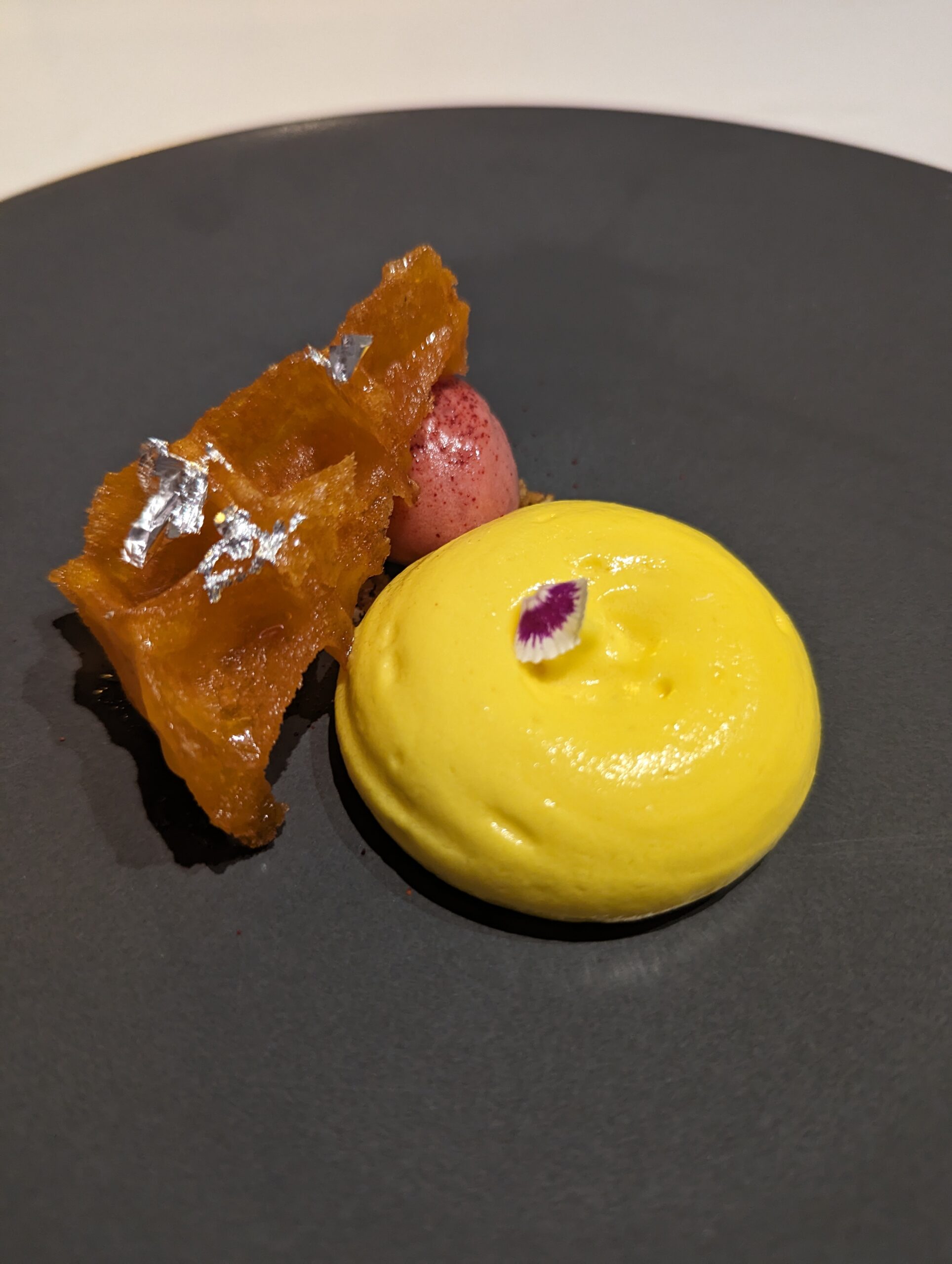
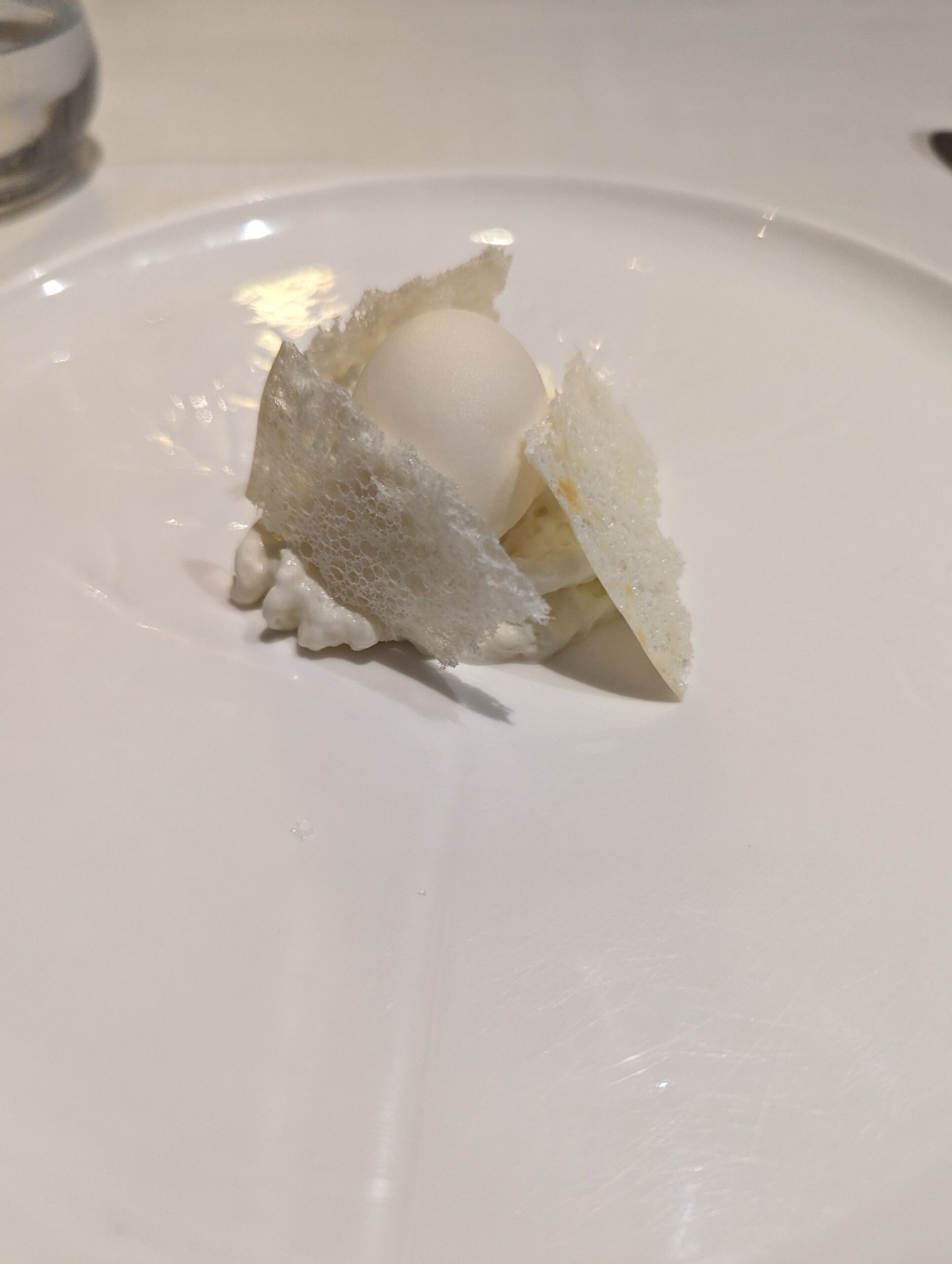
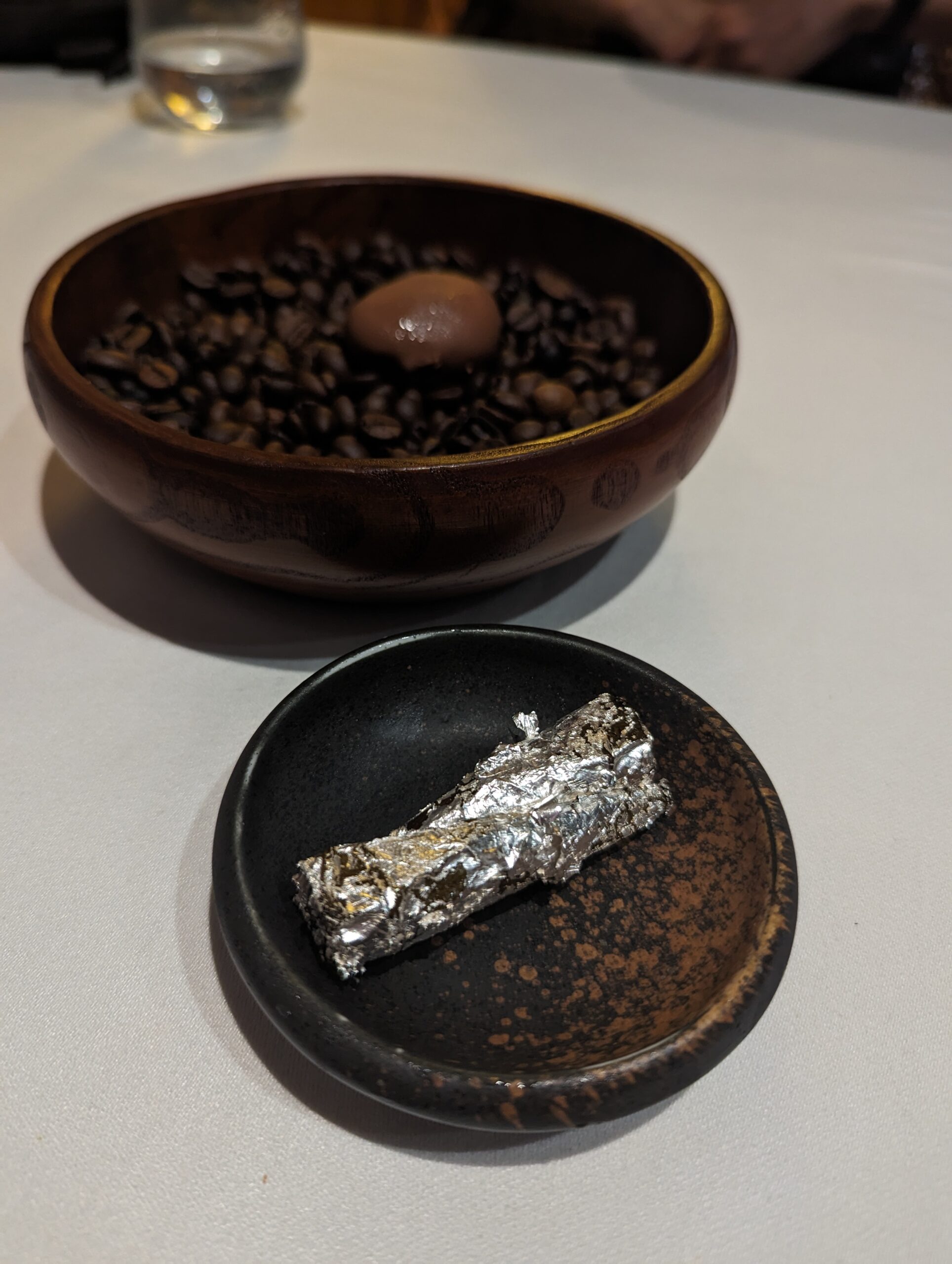
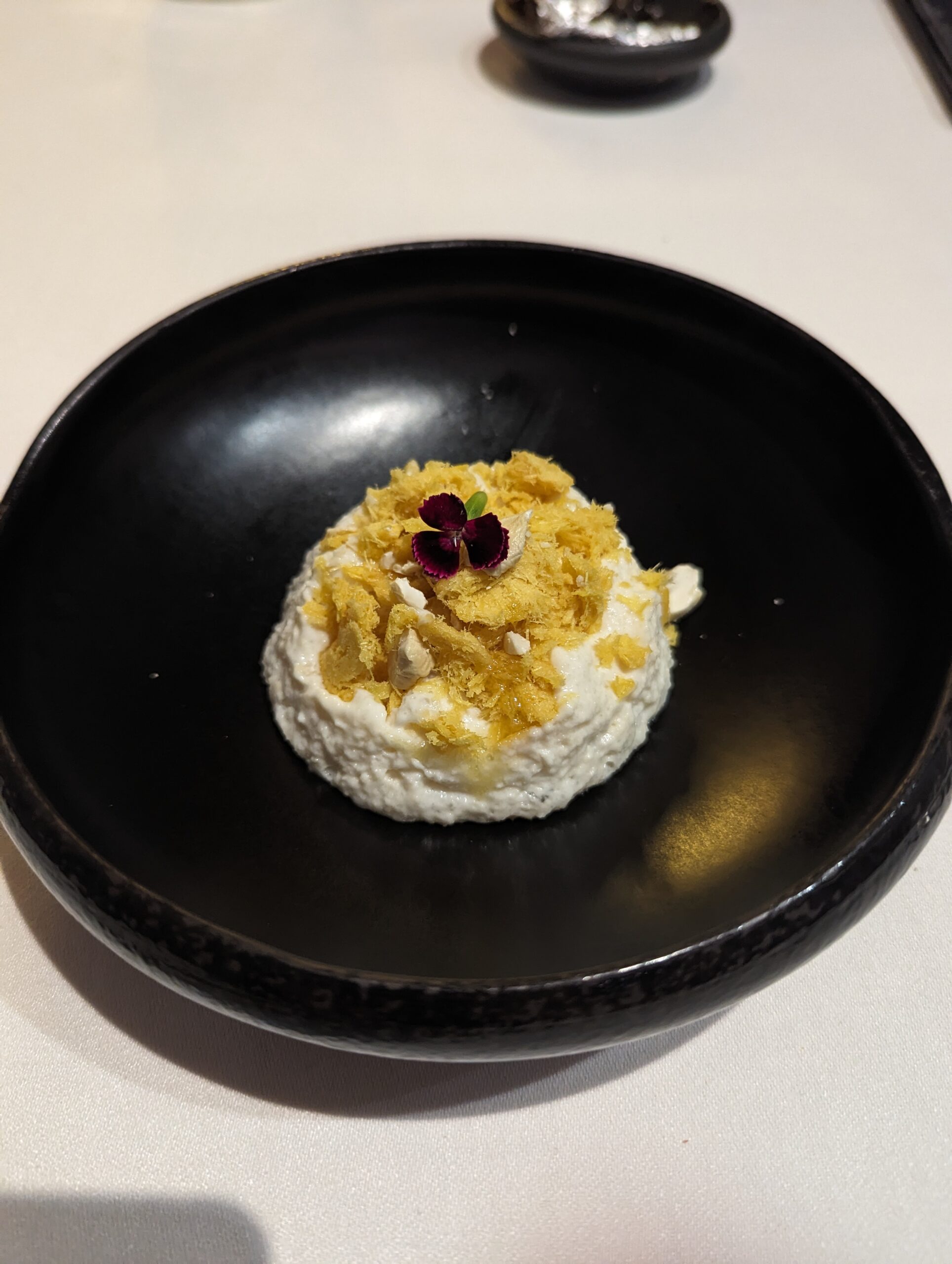
Leave a Reply